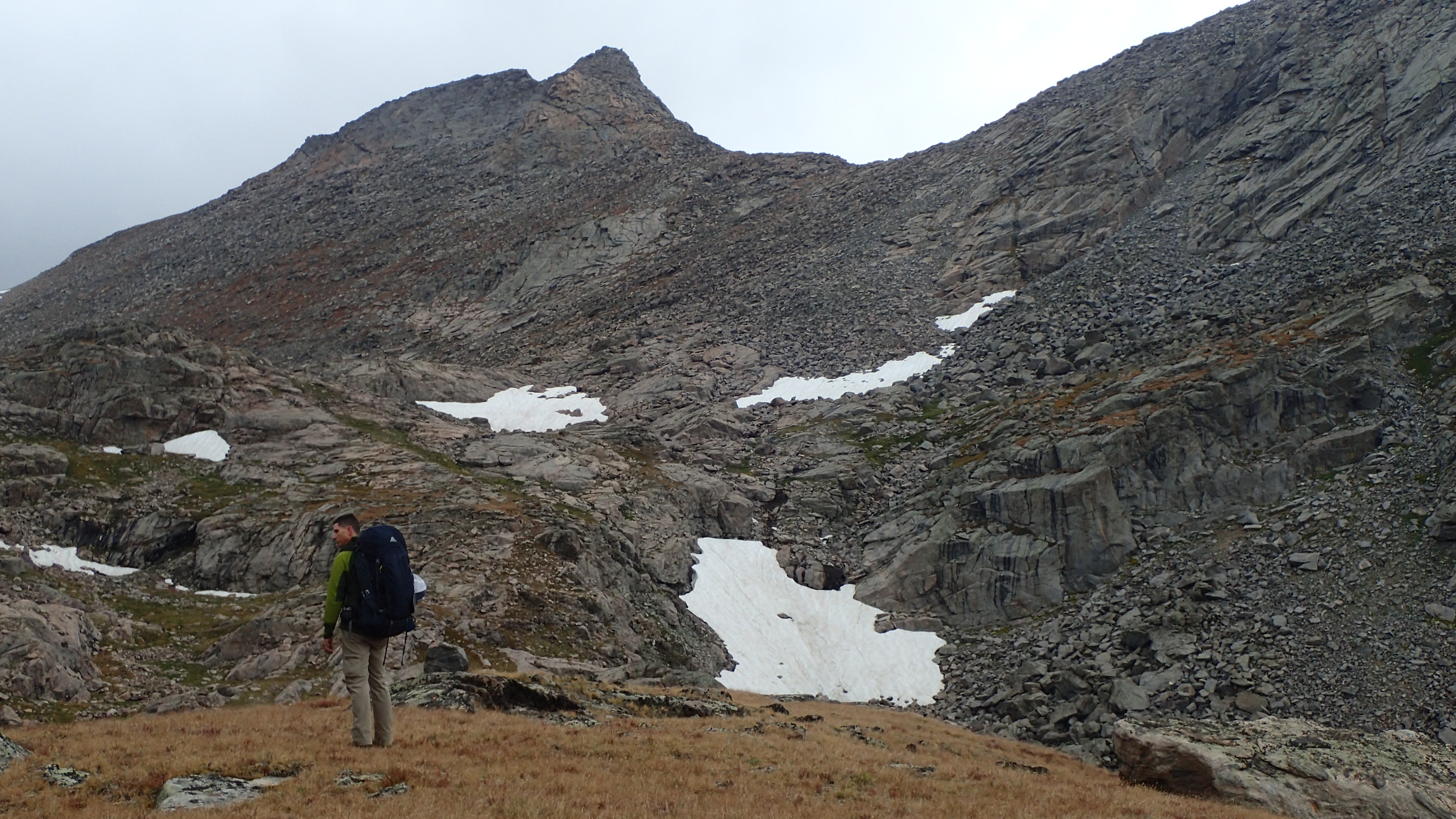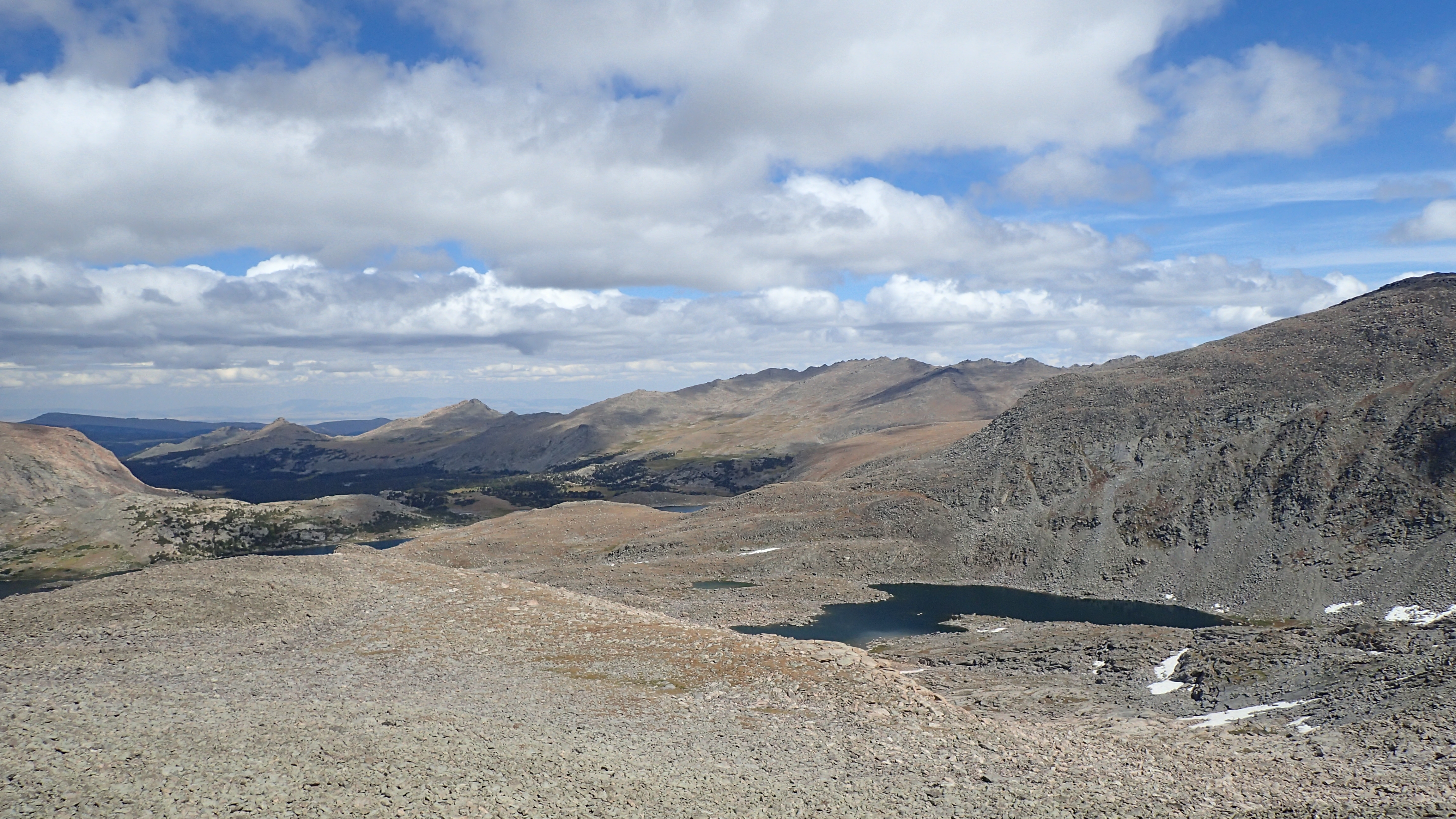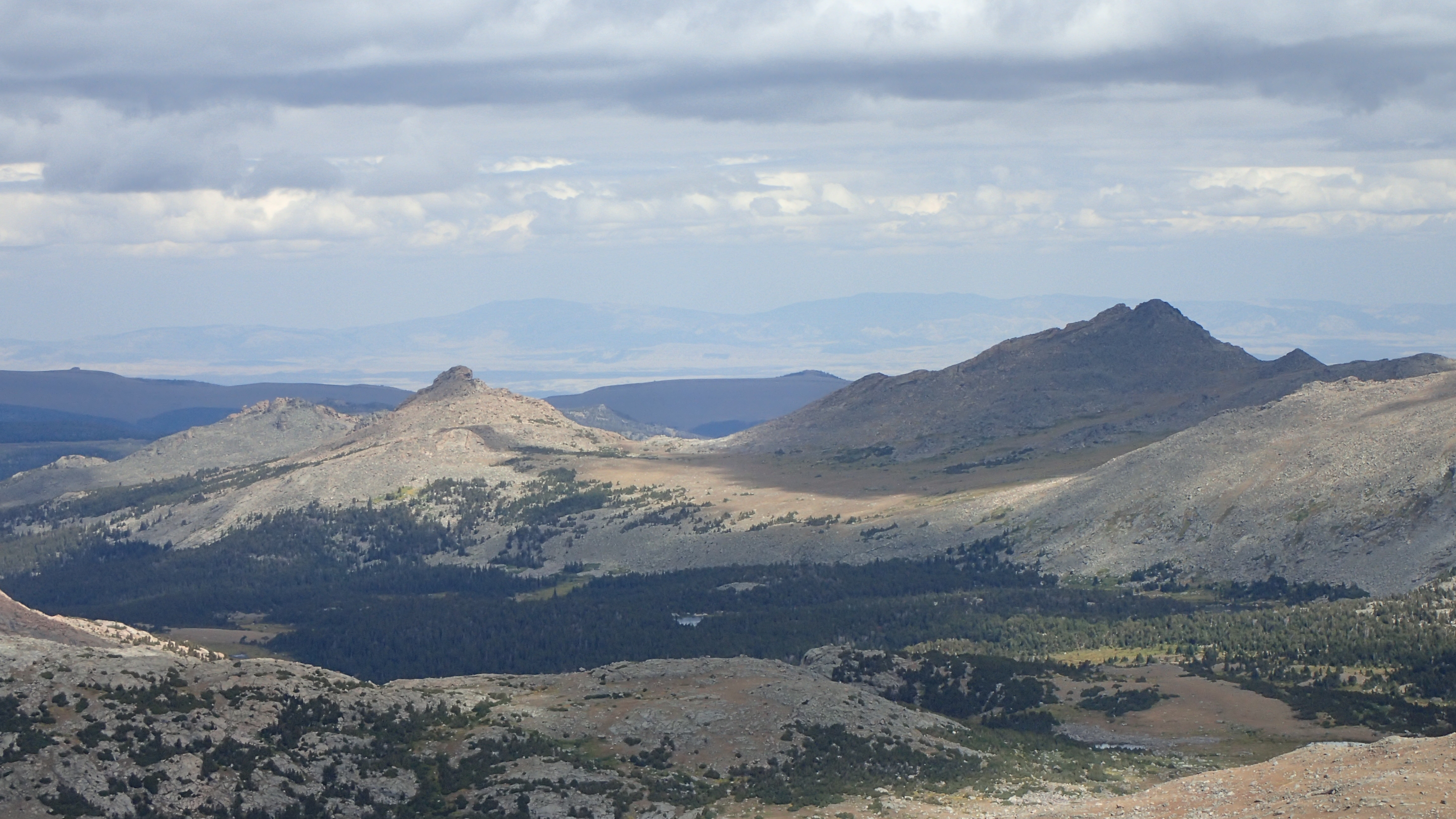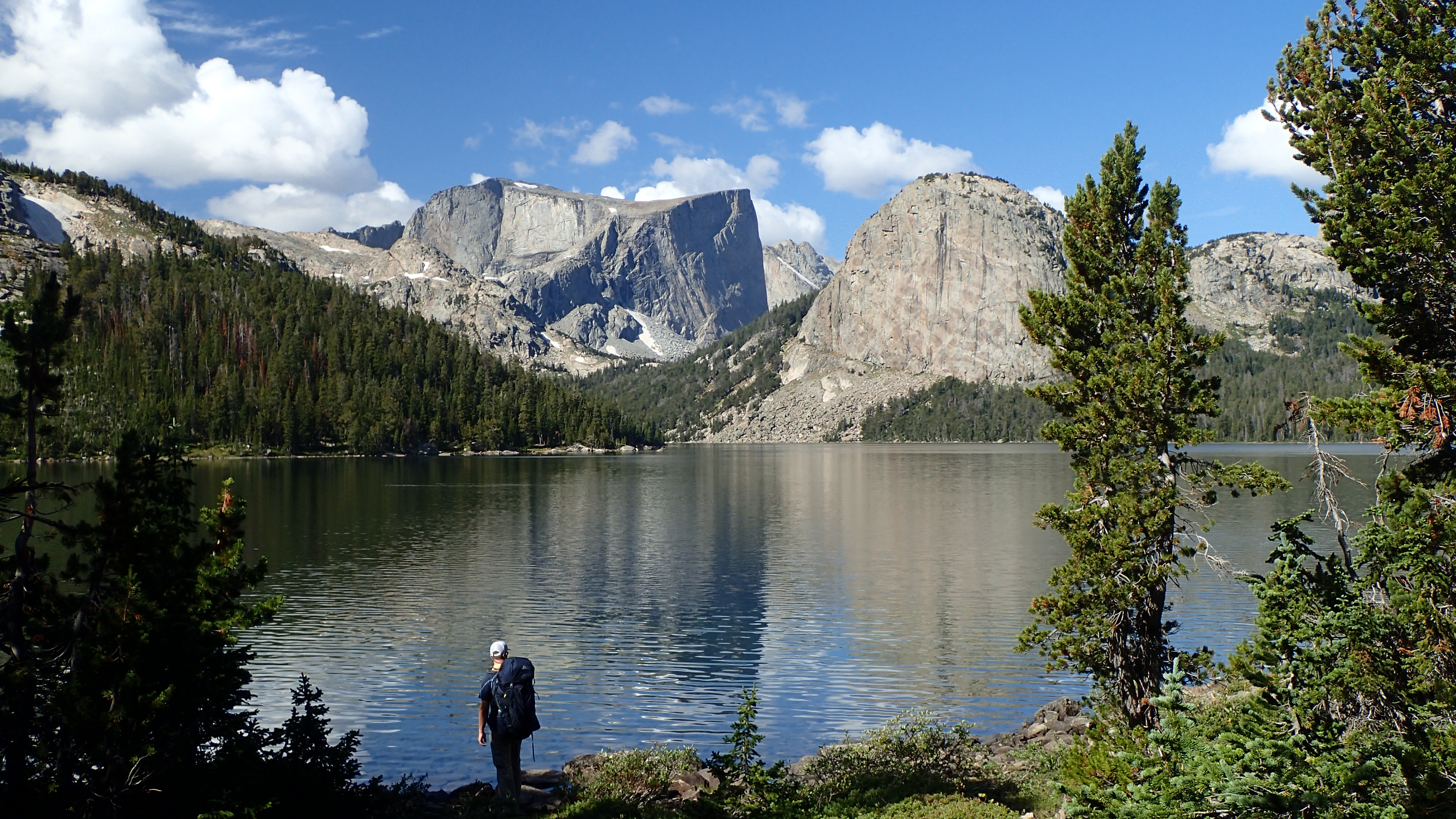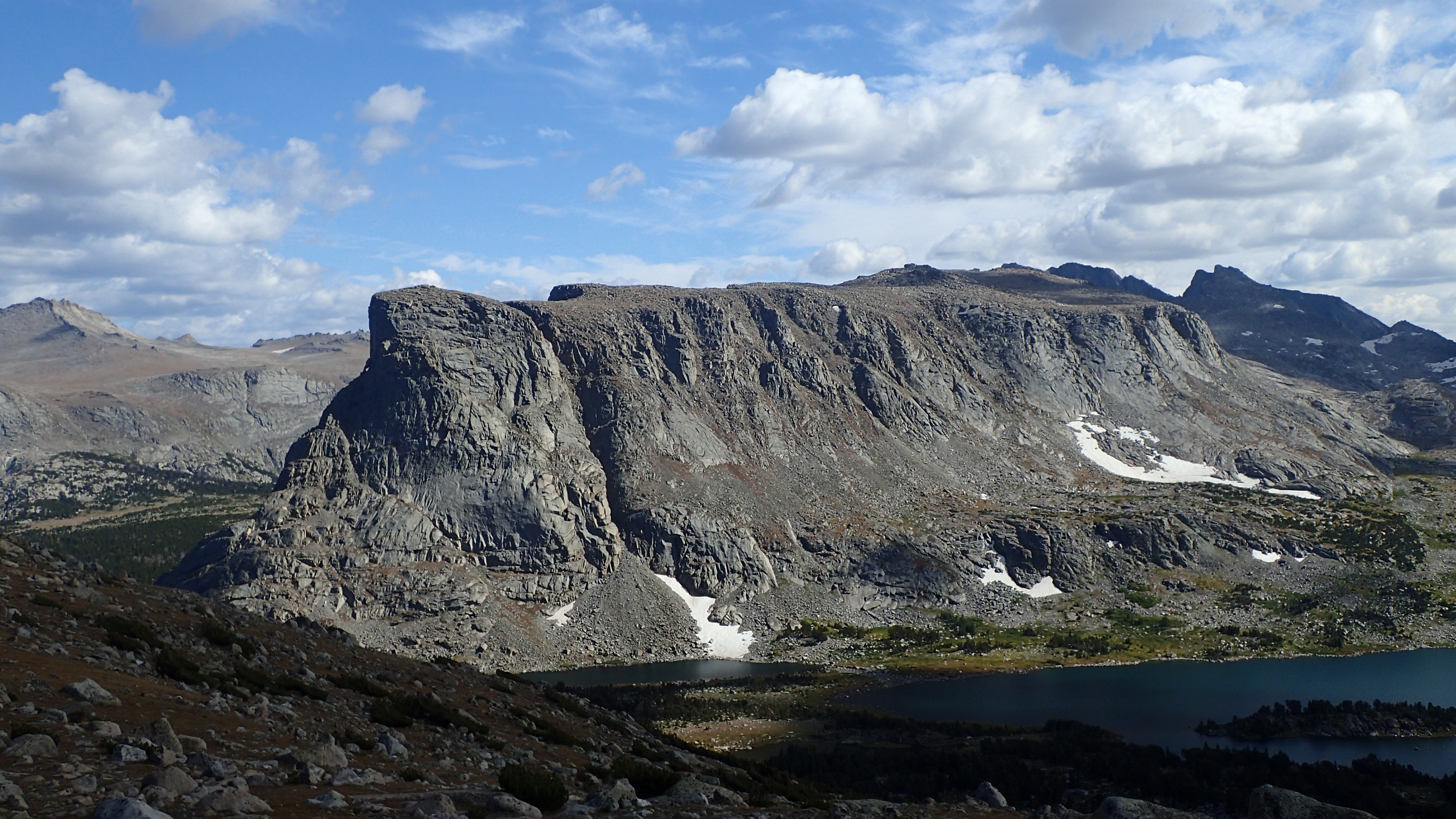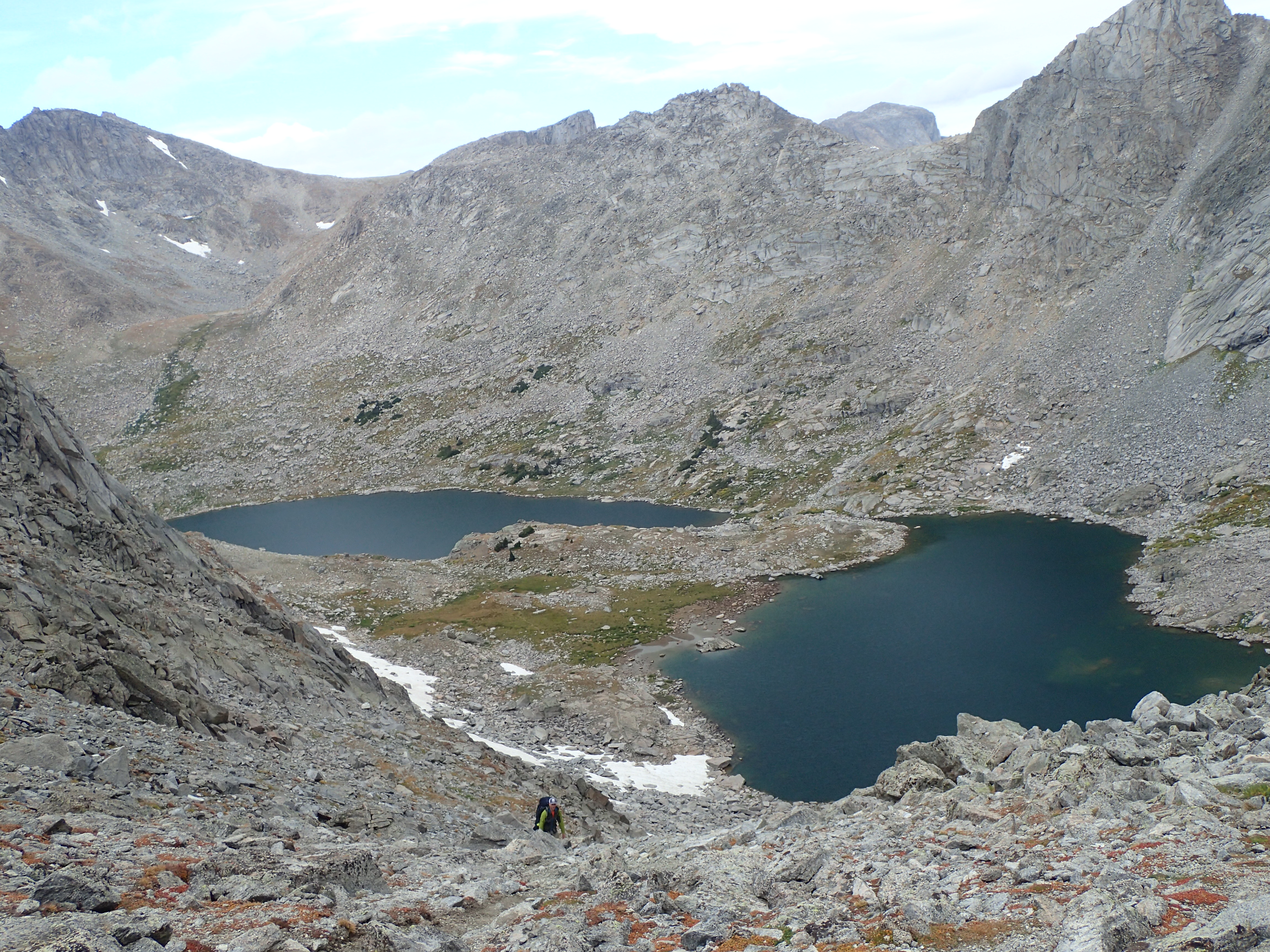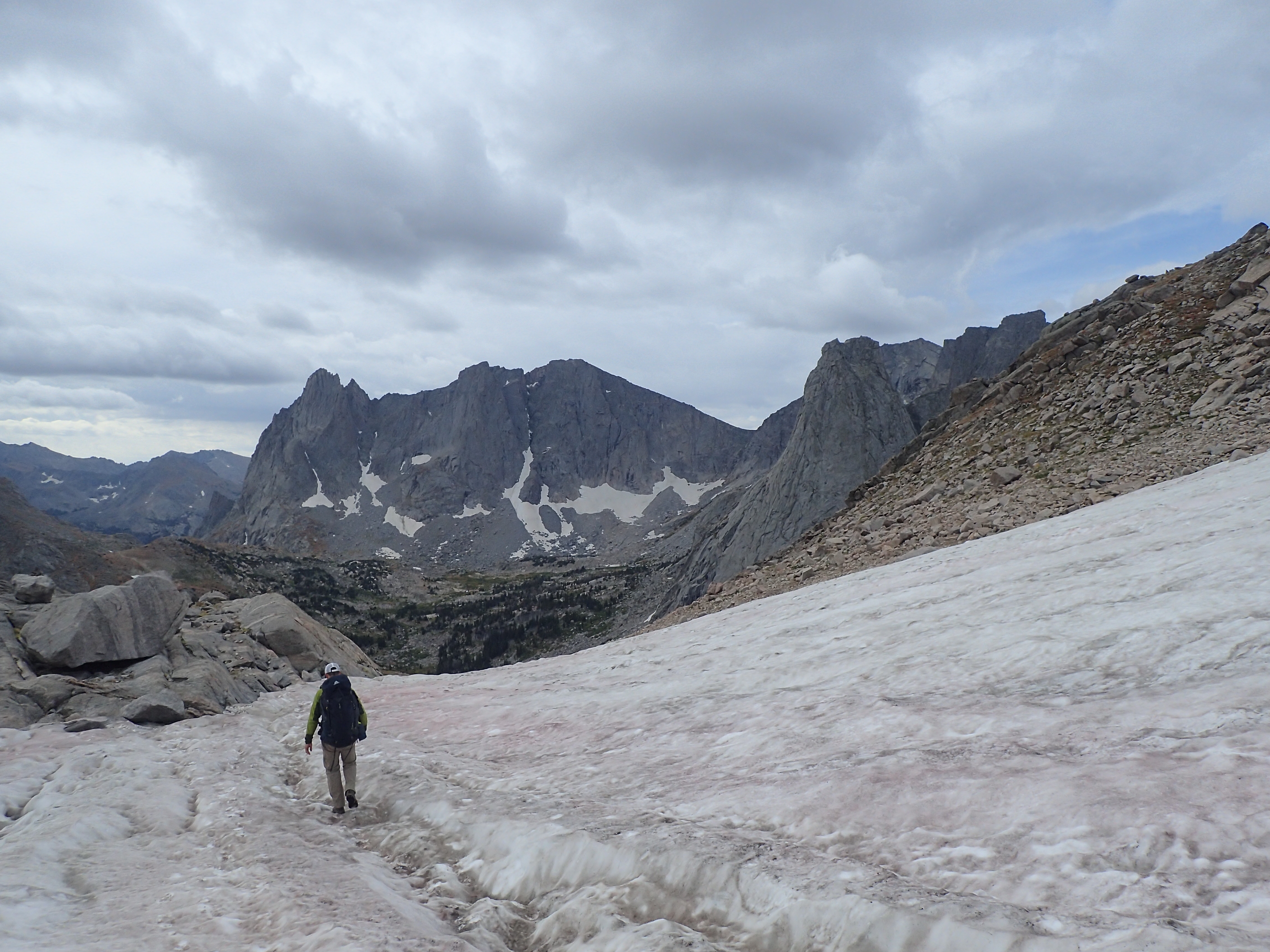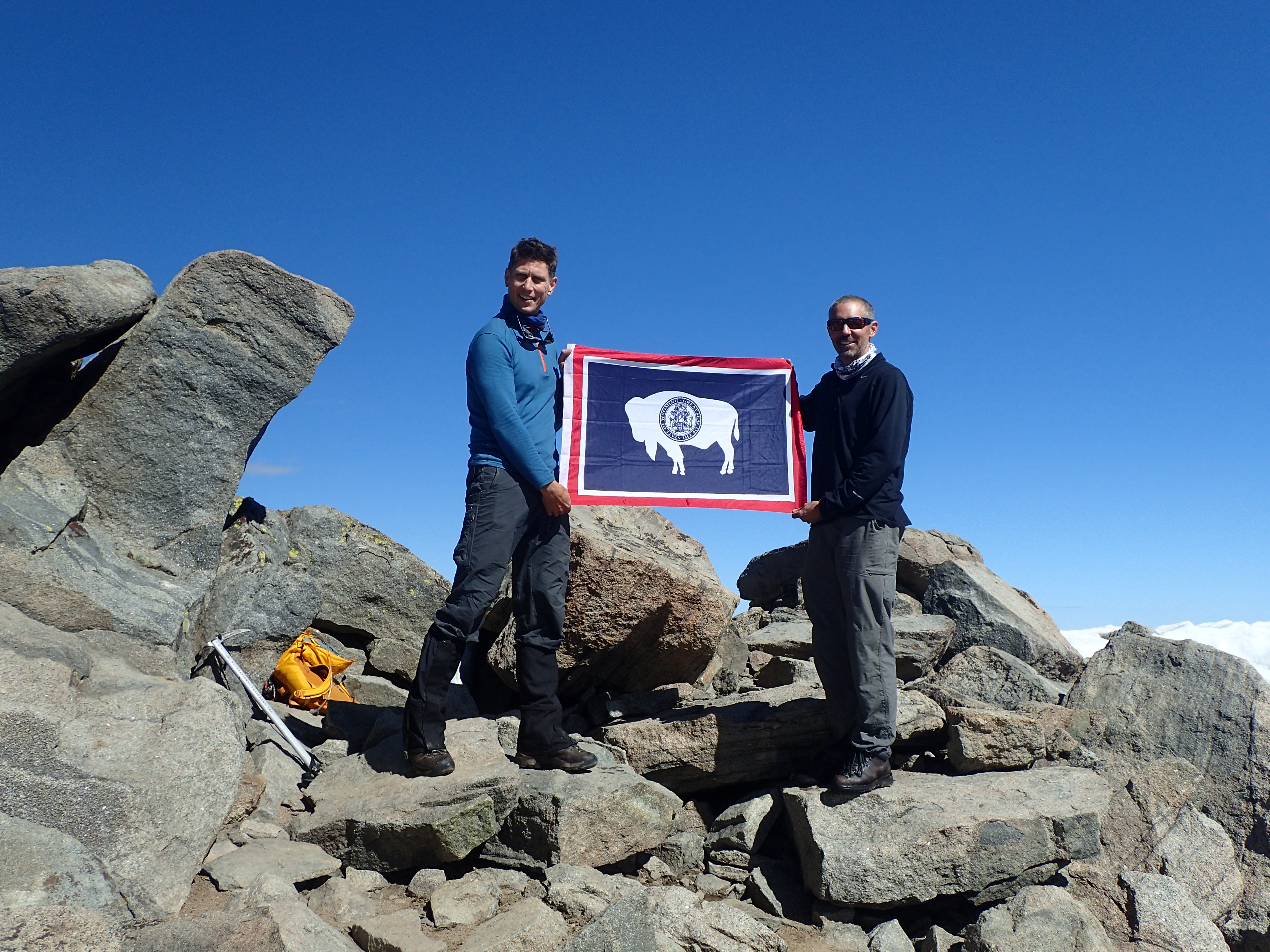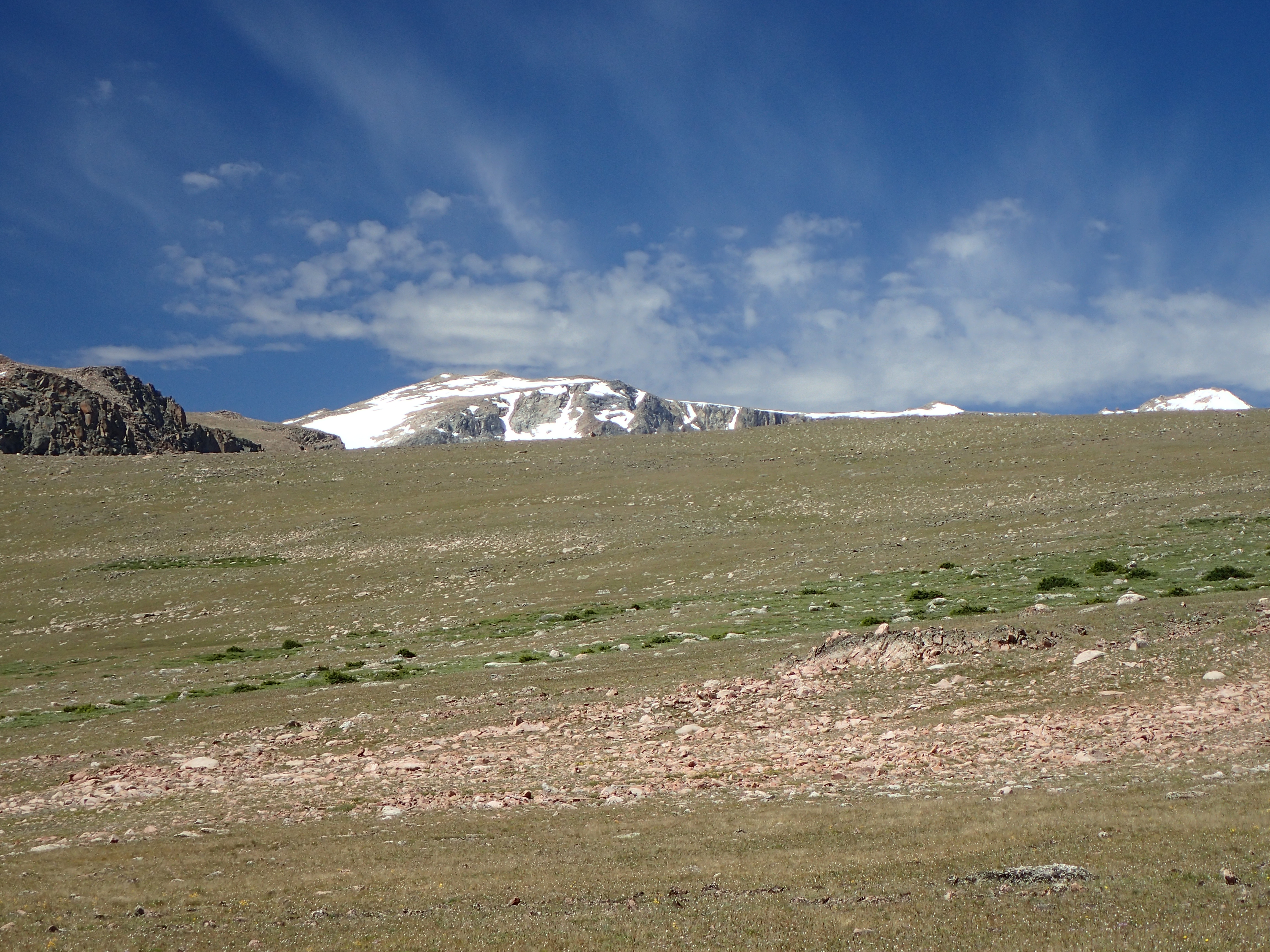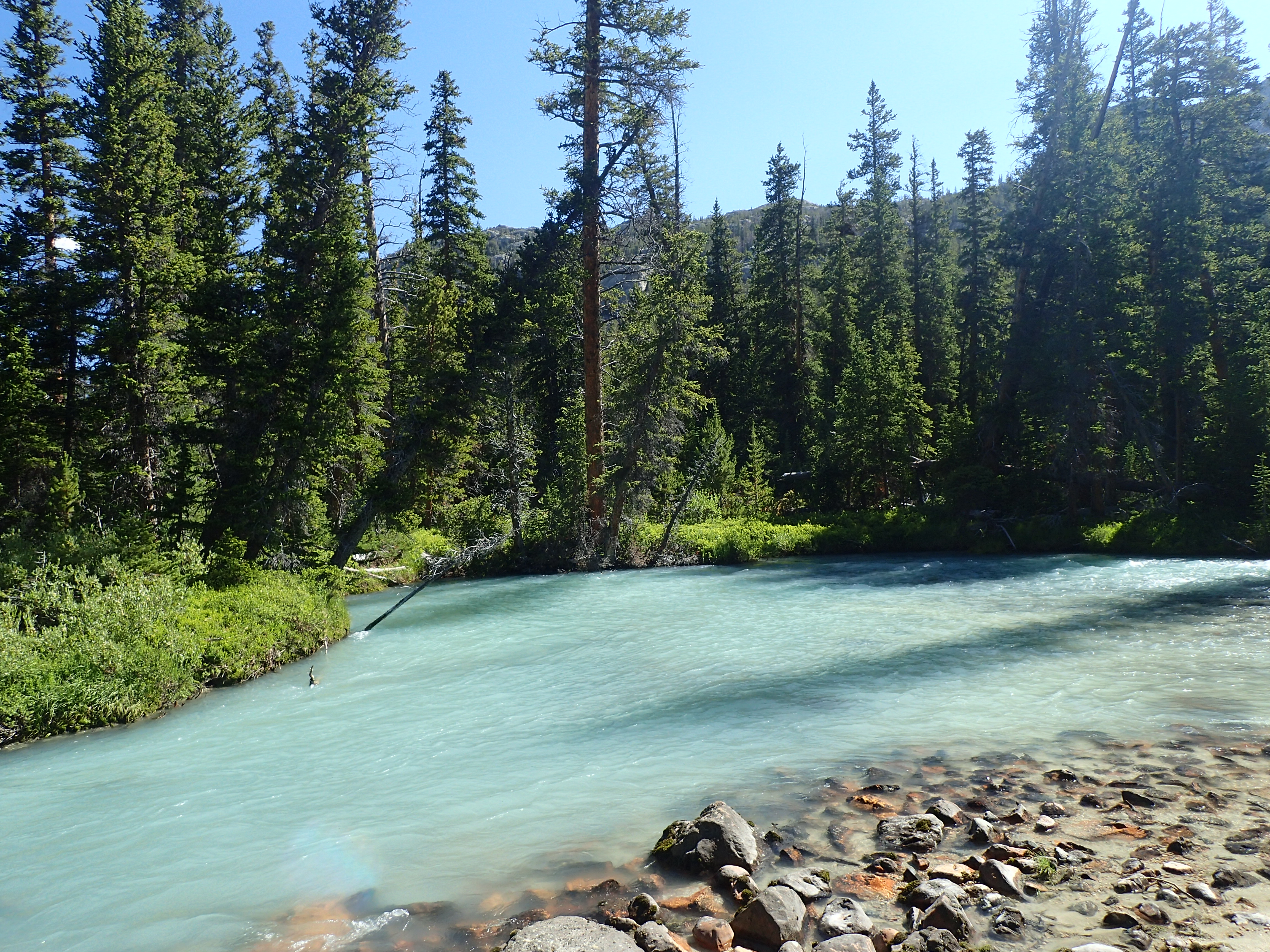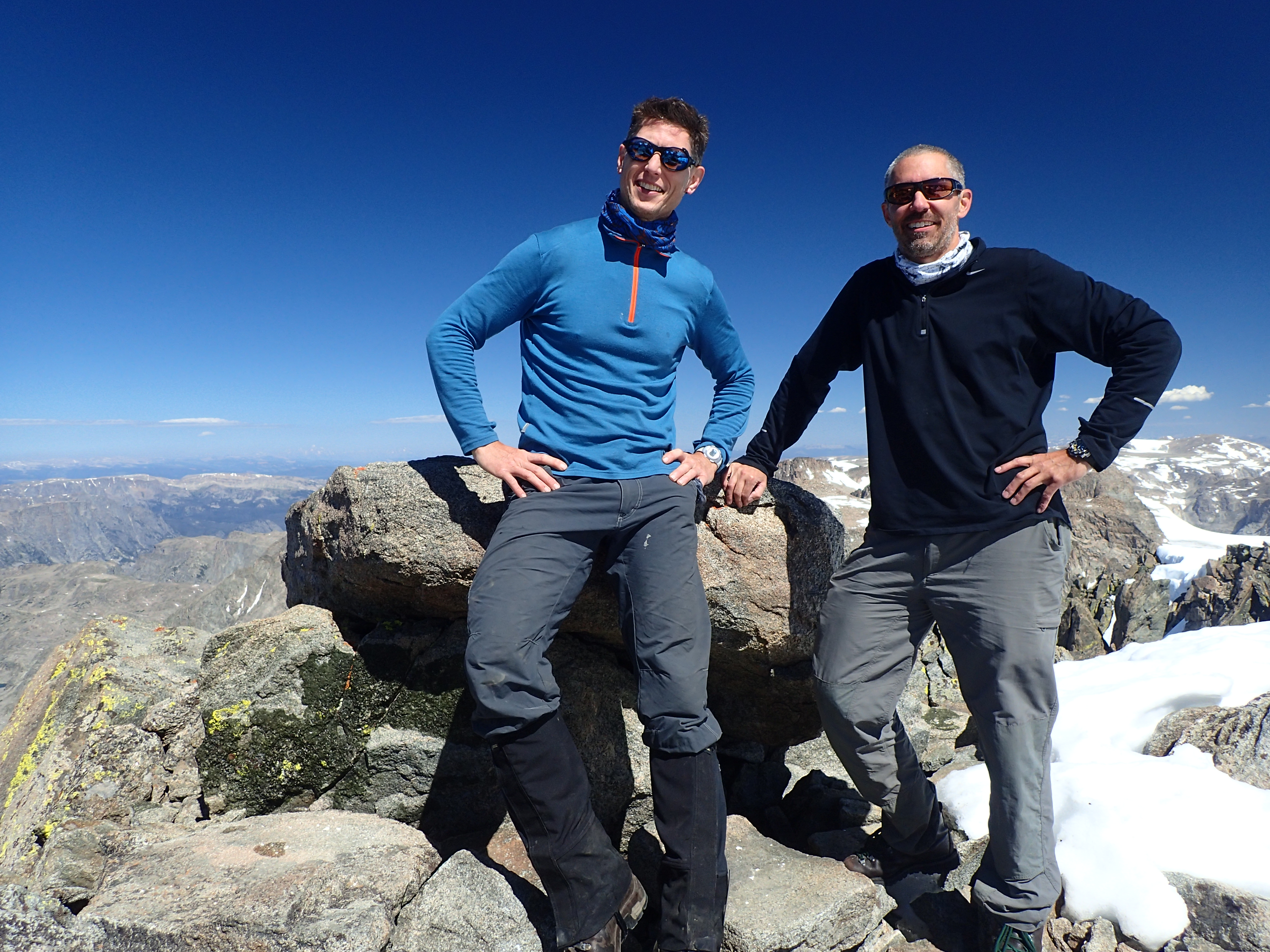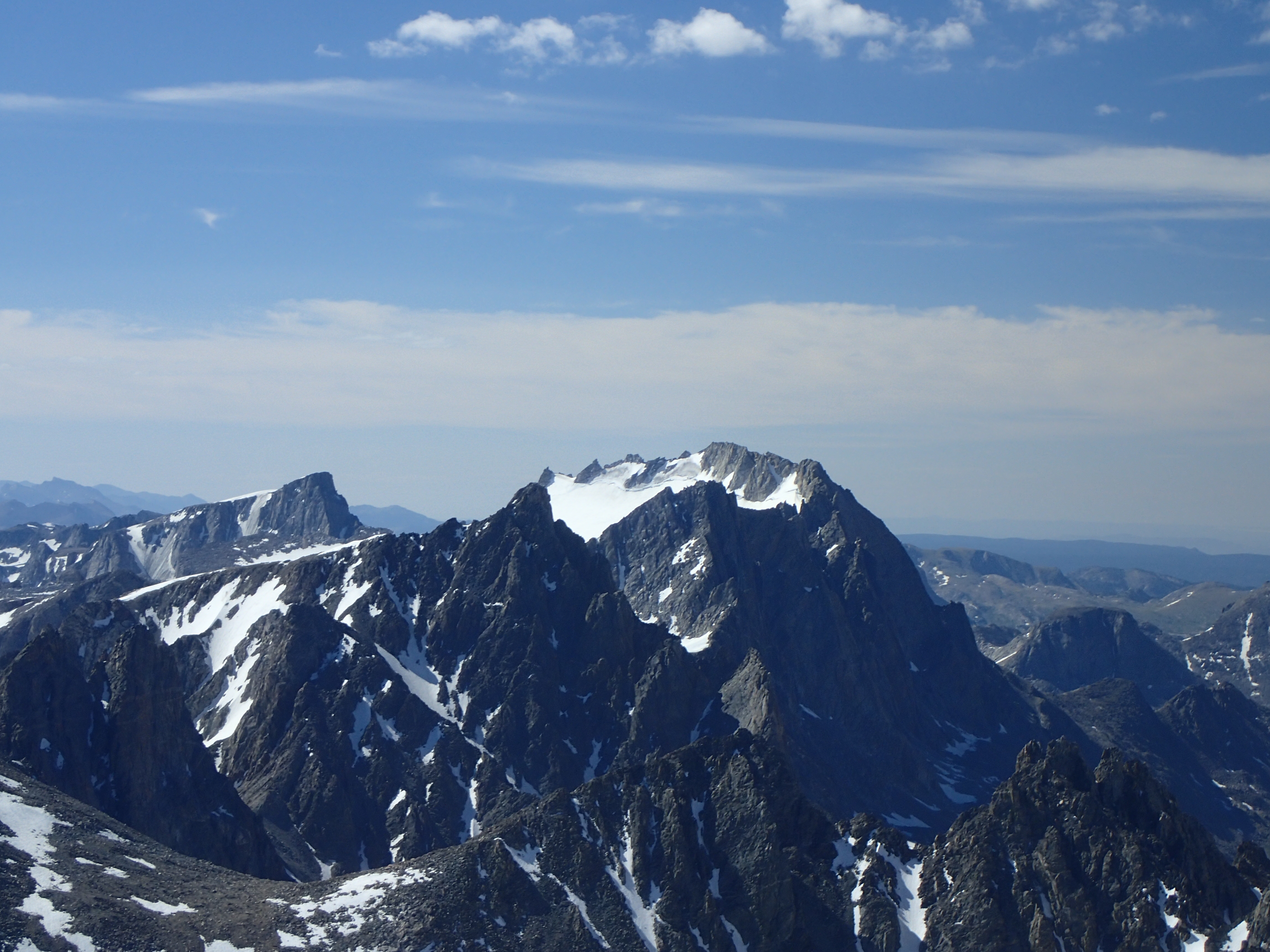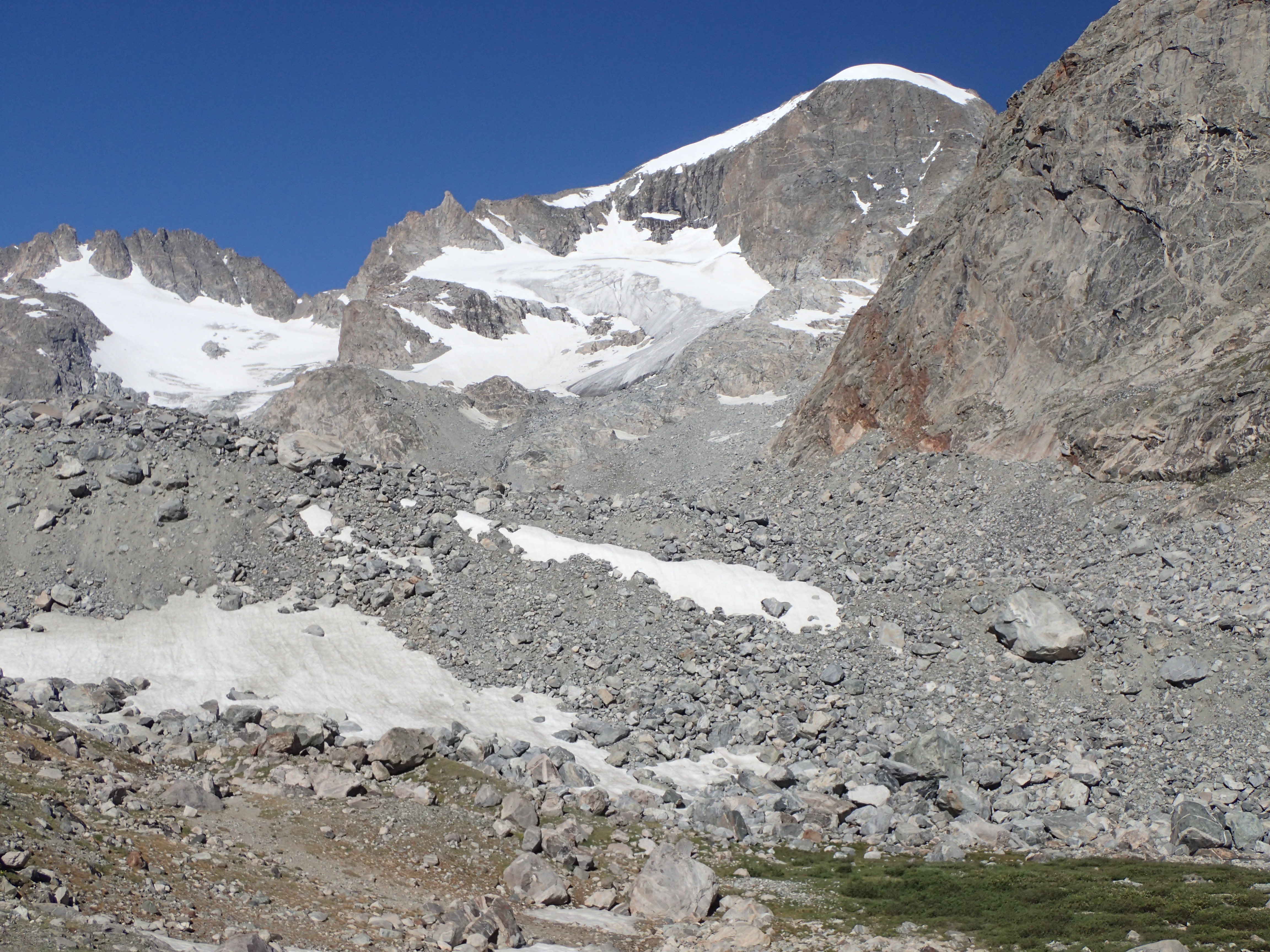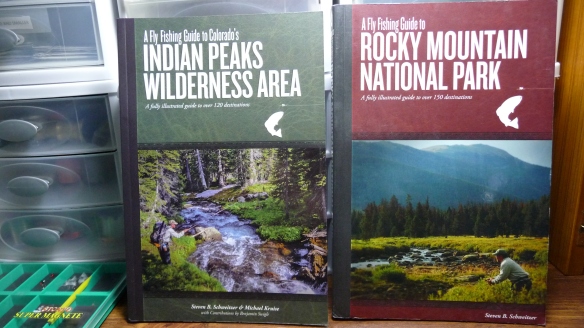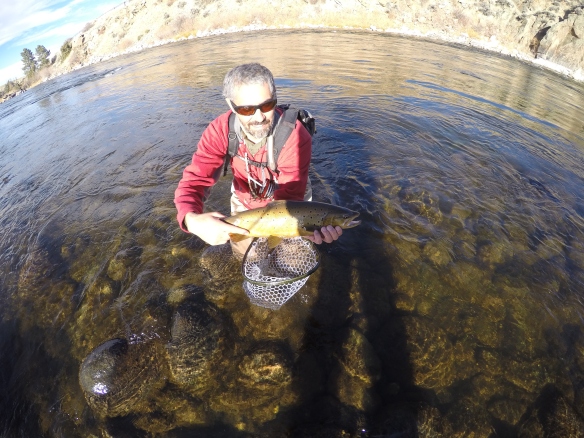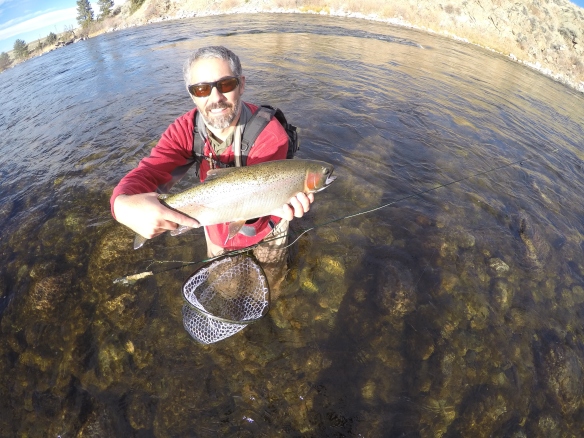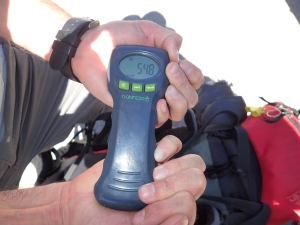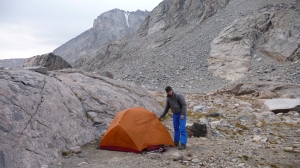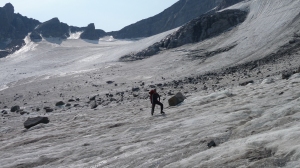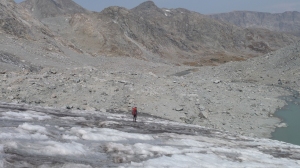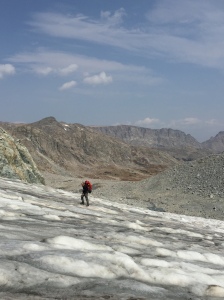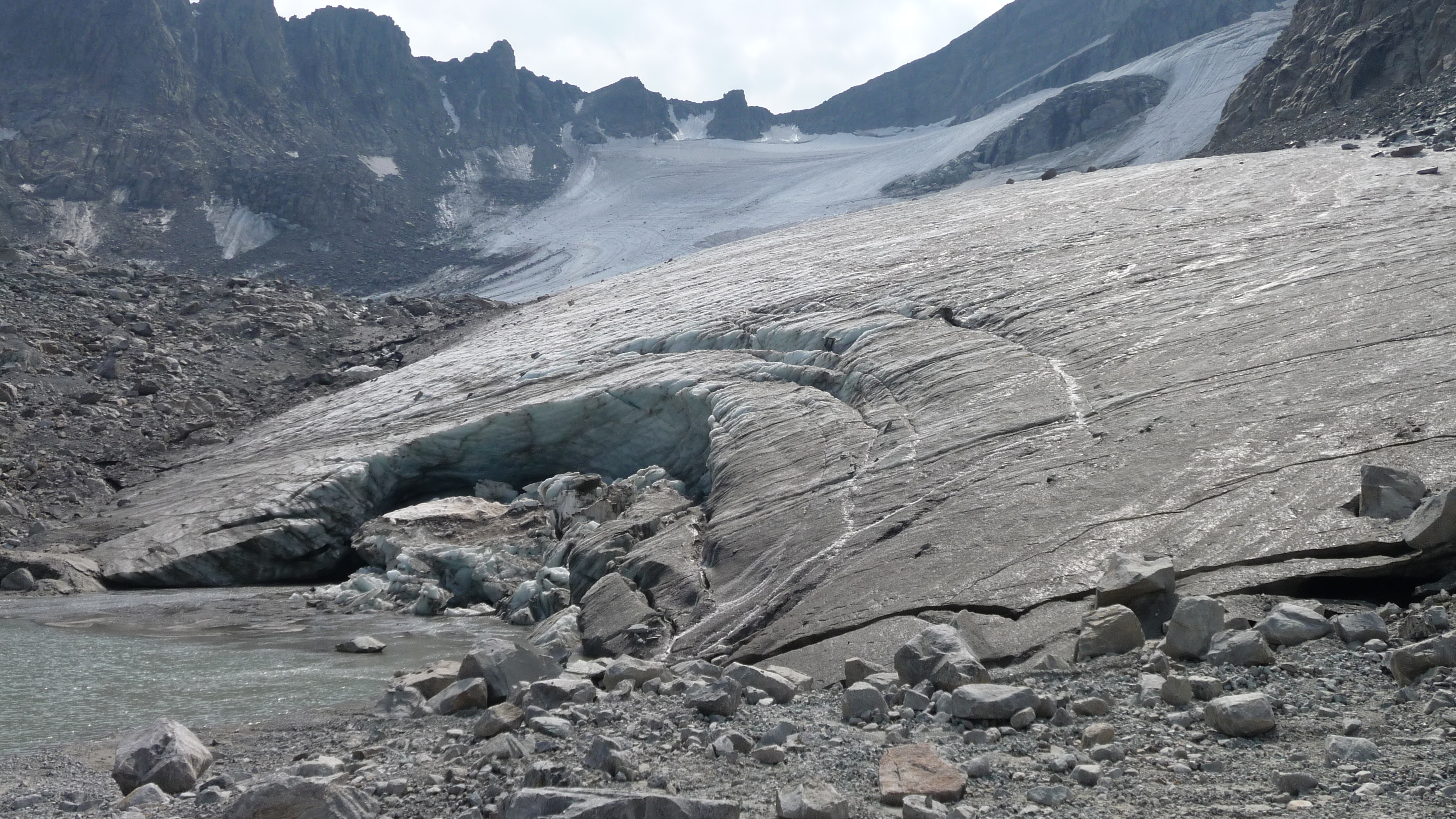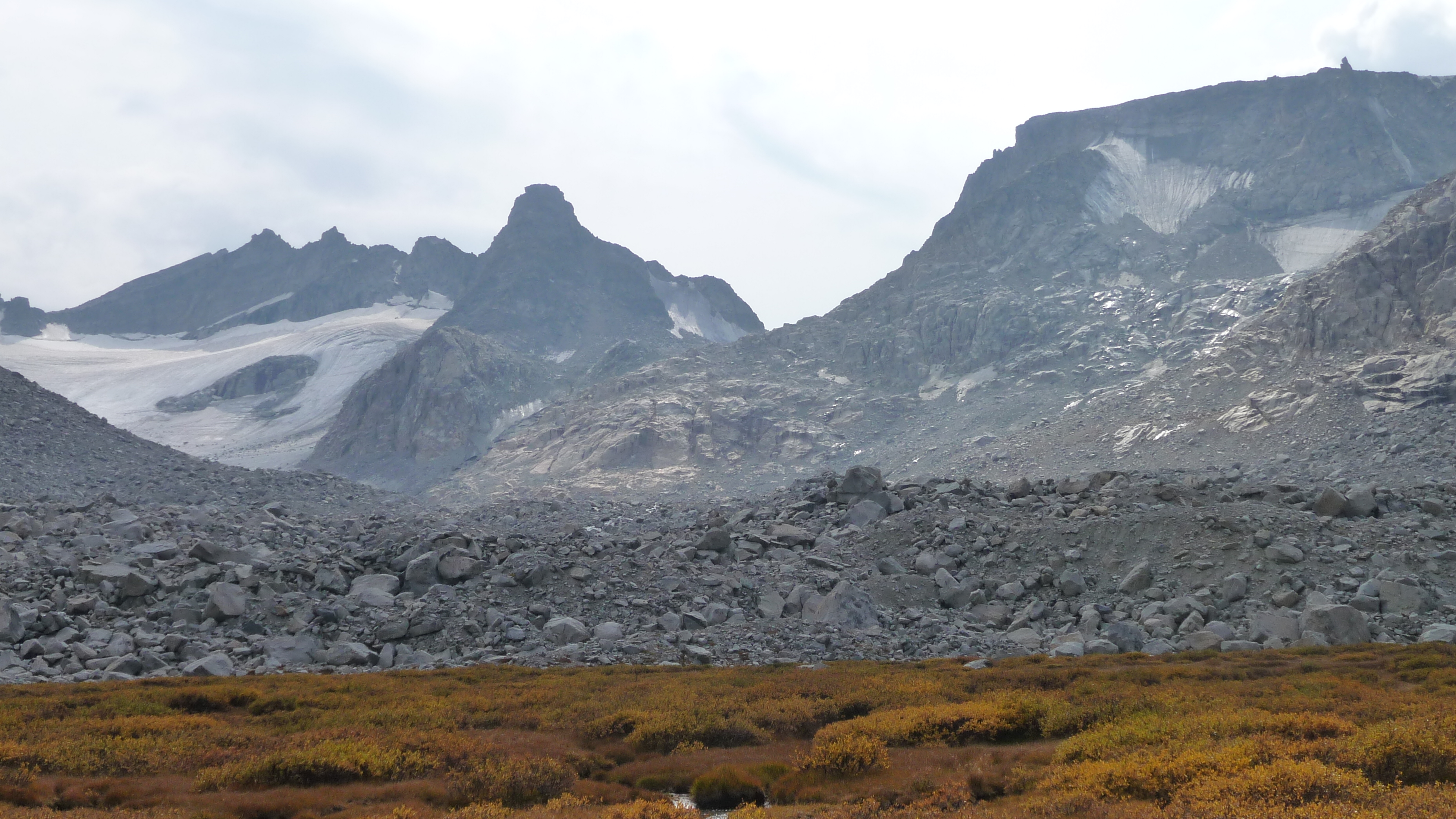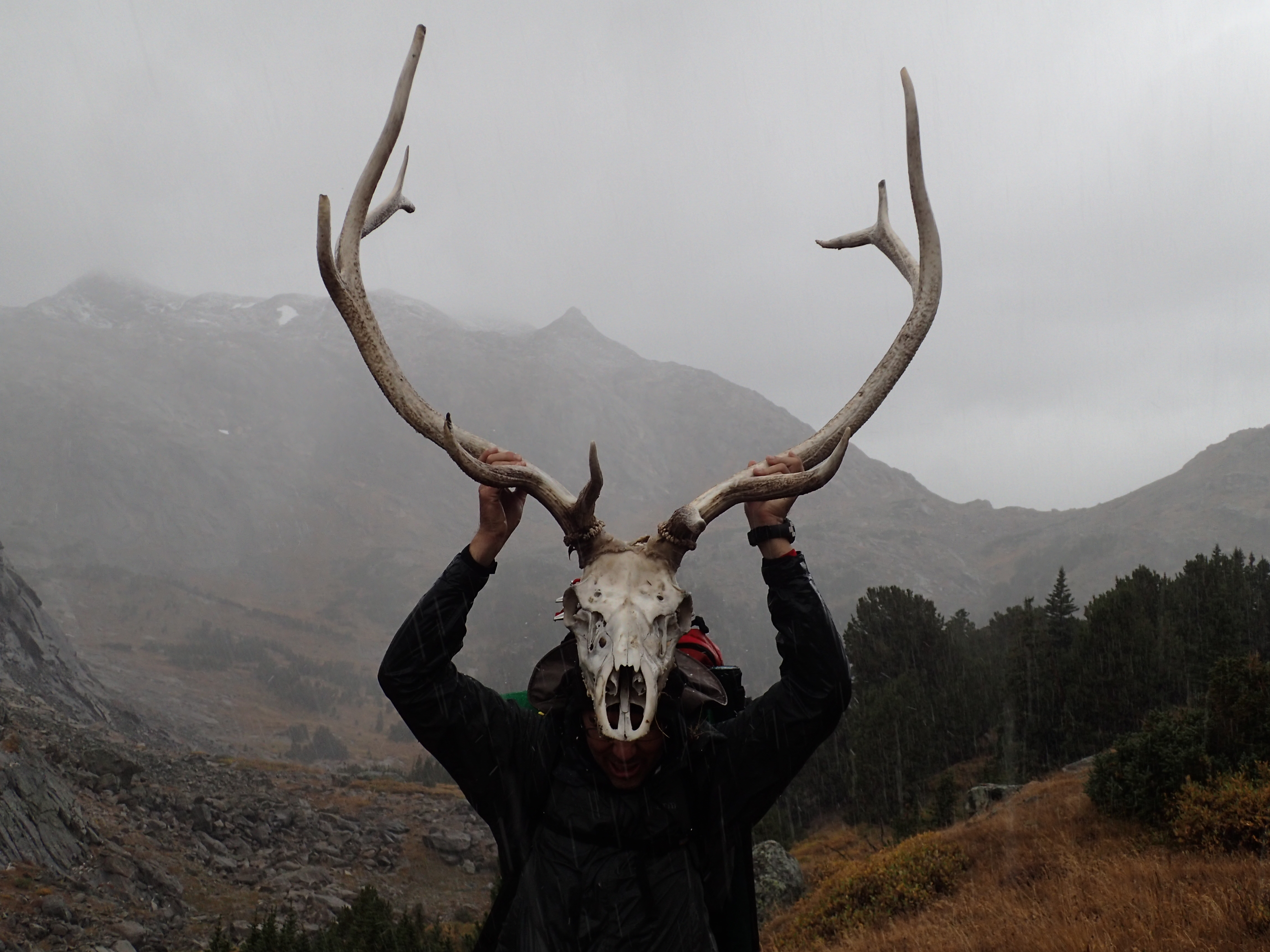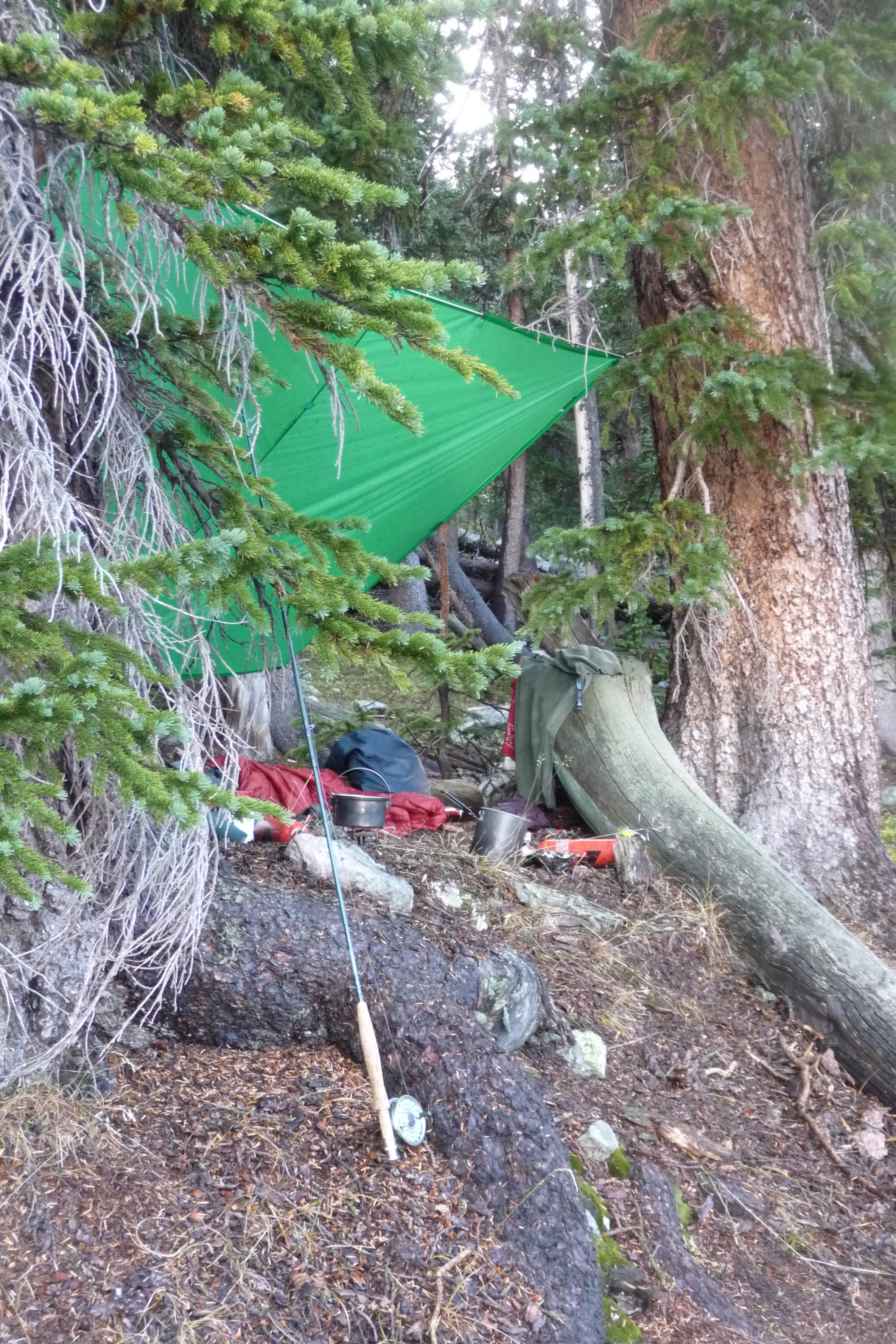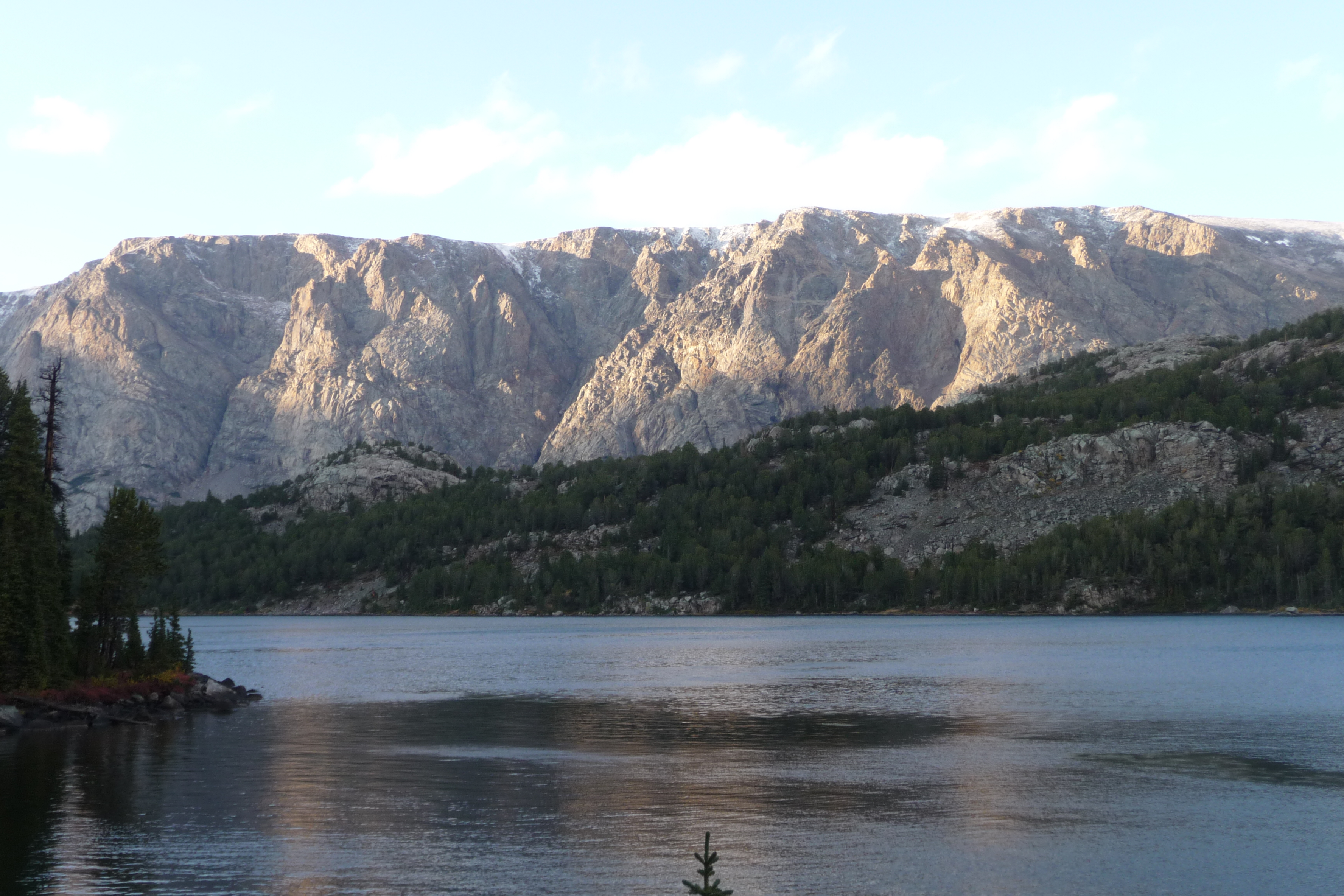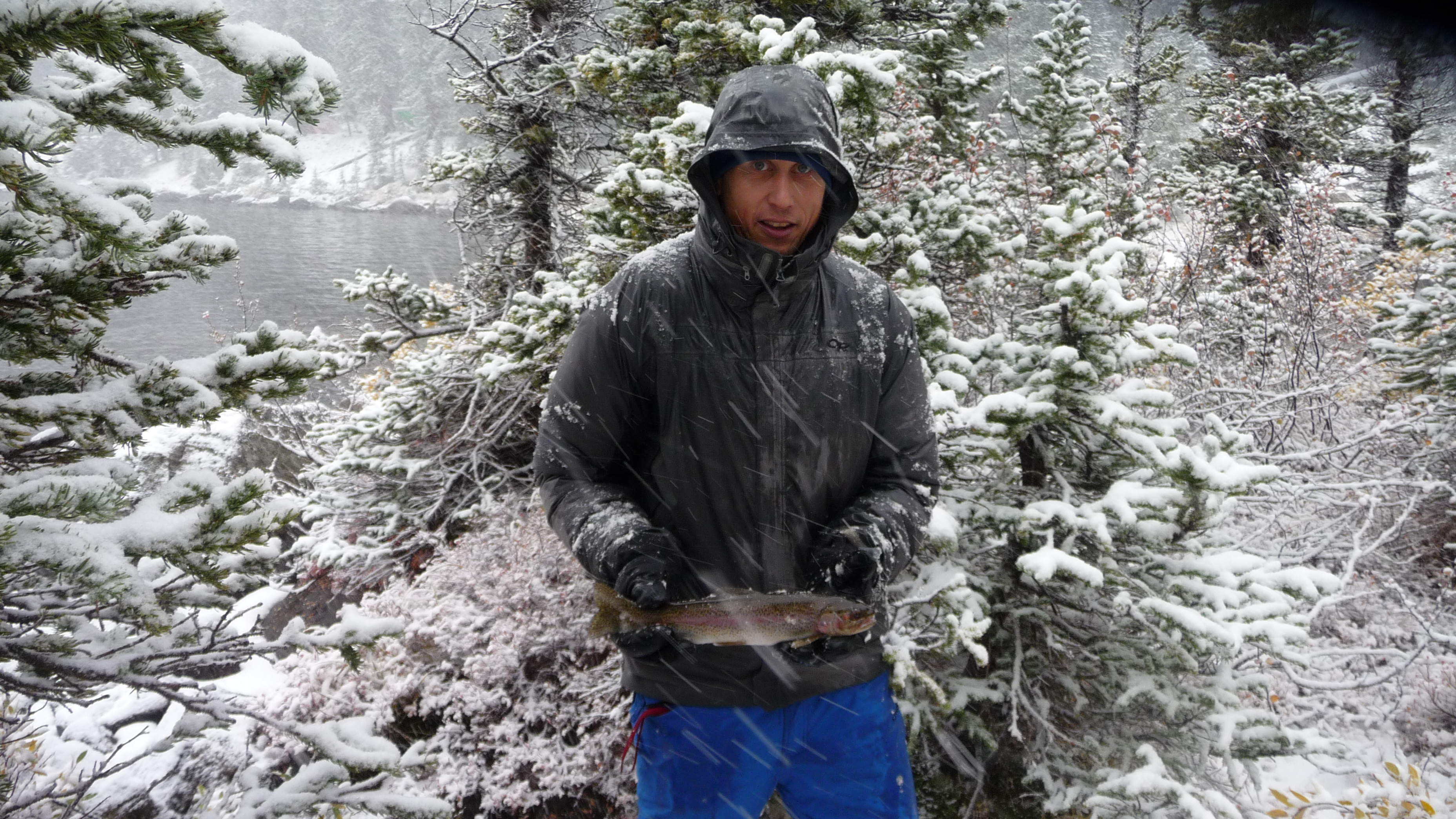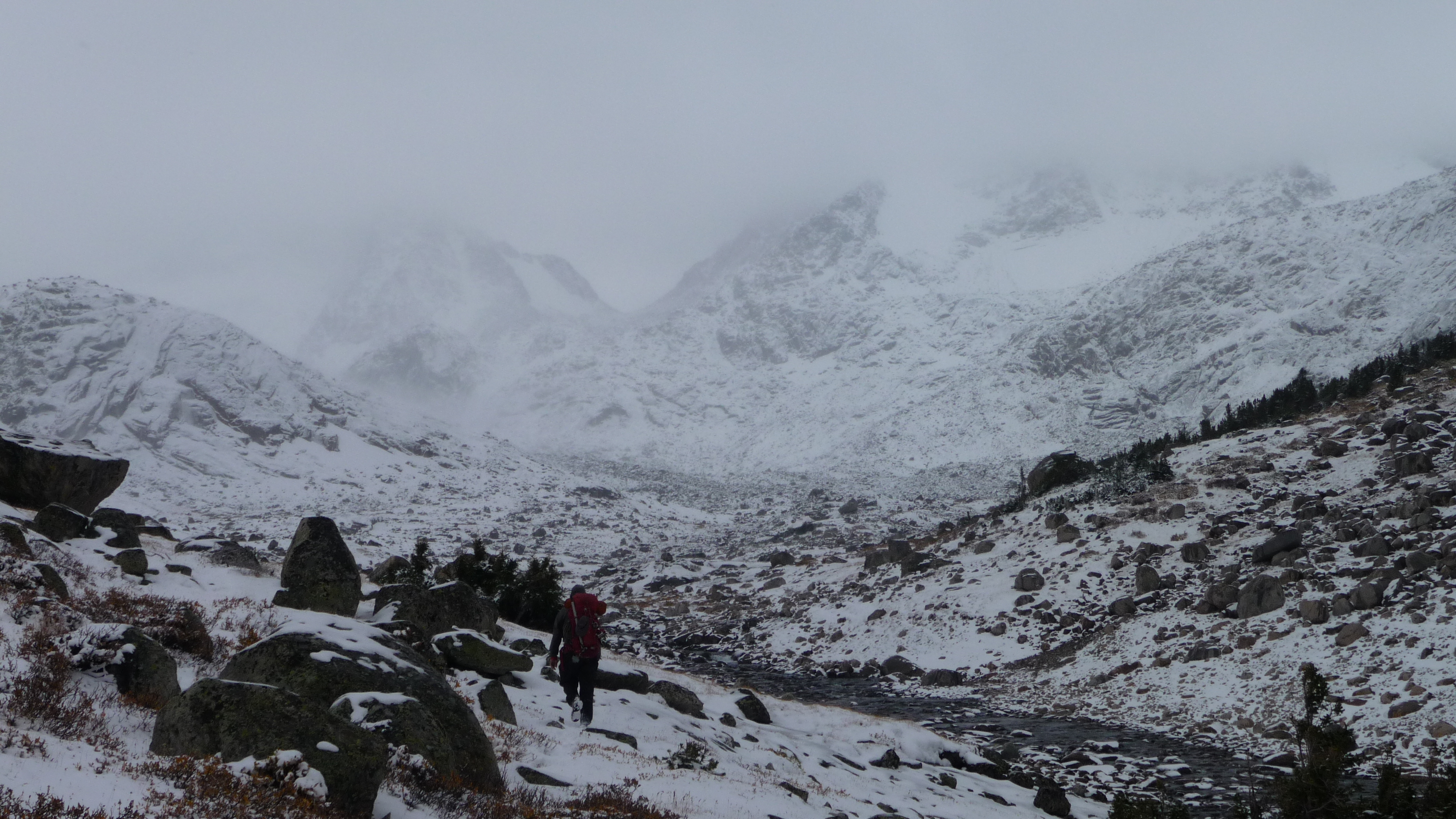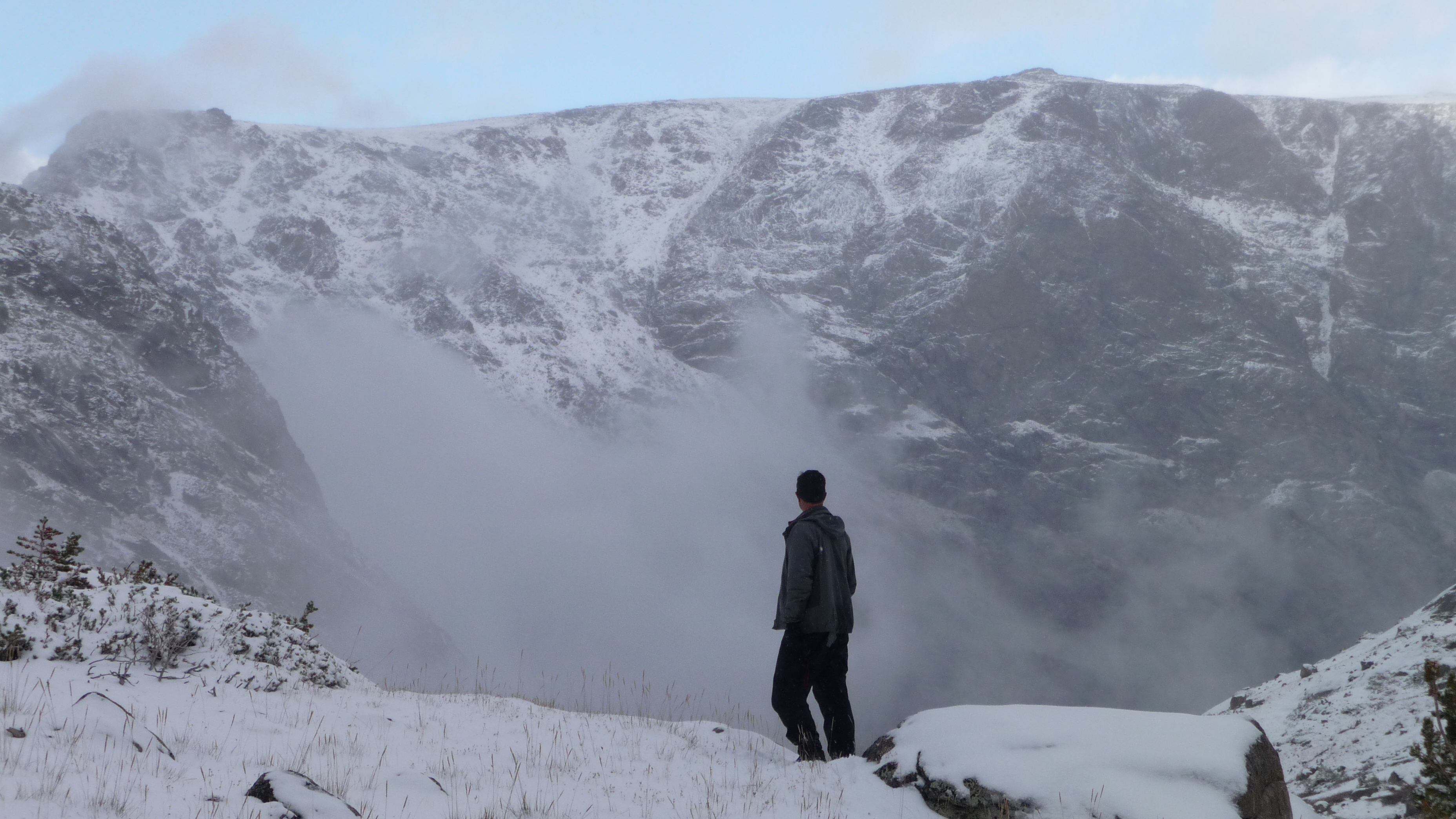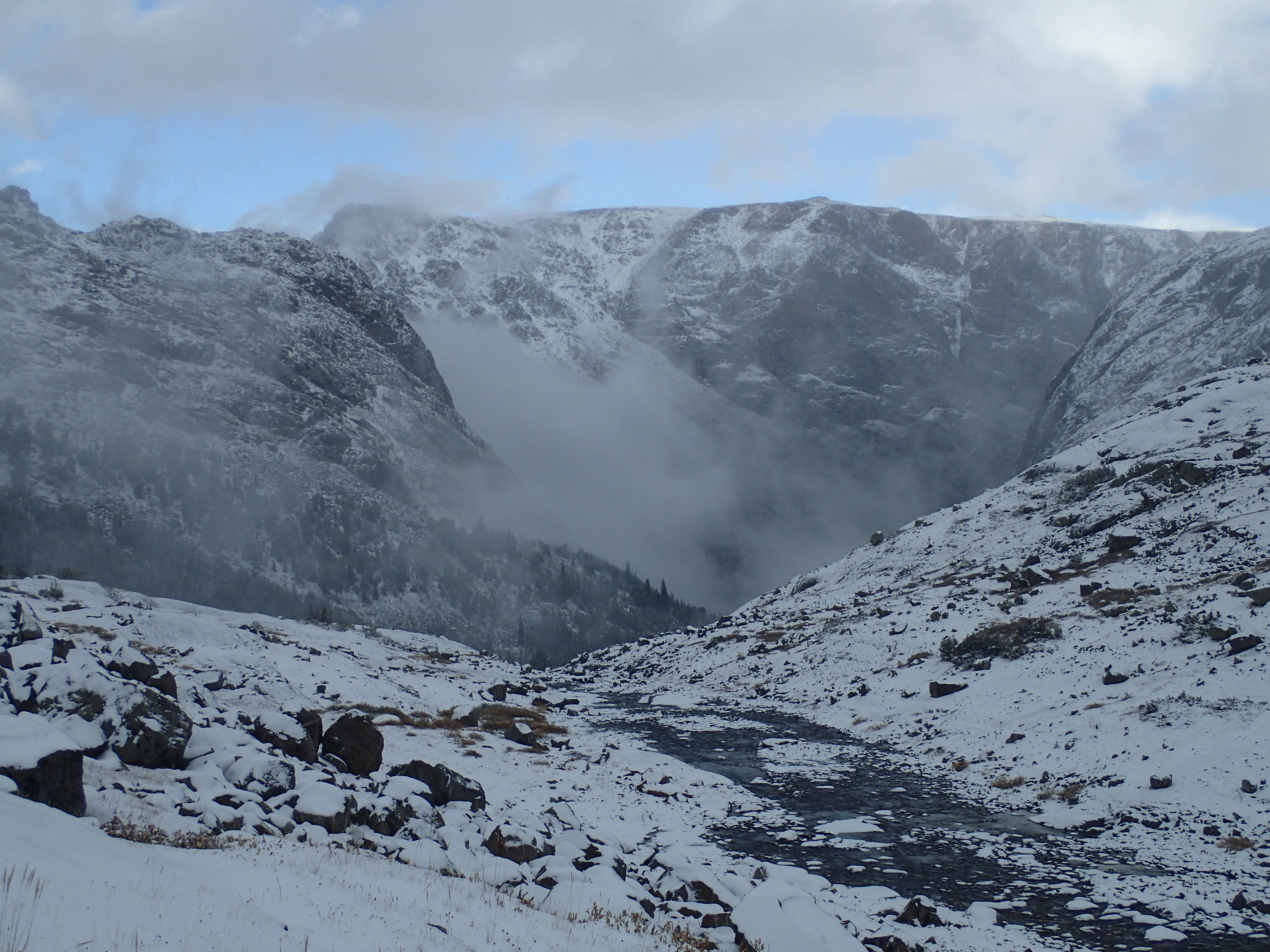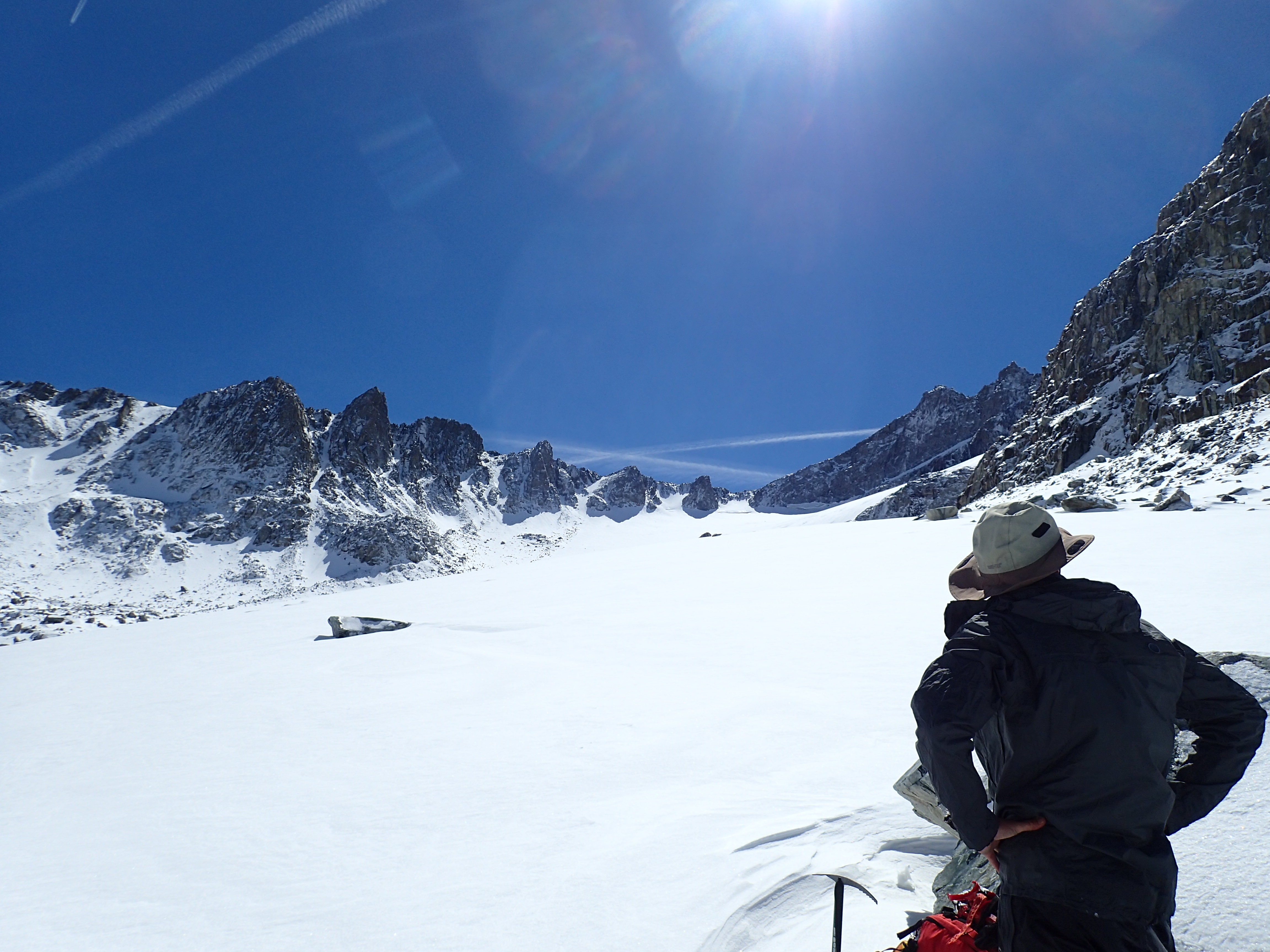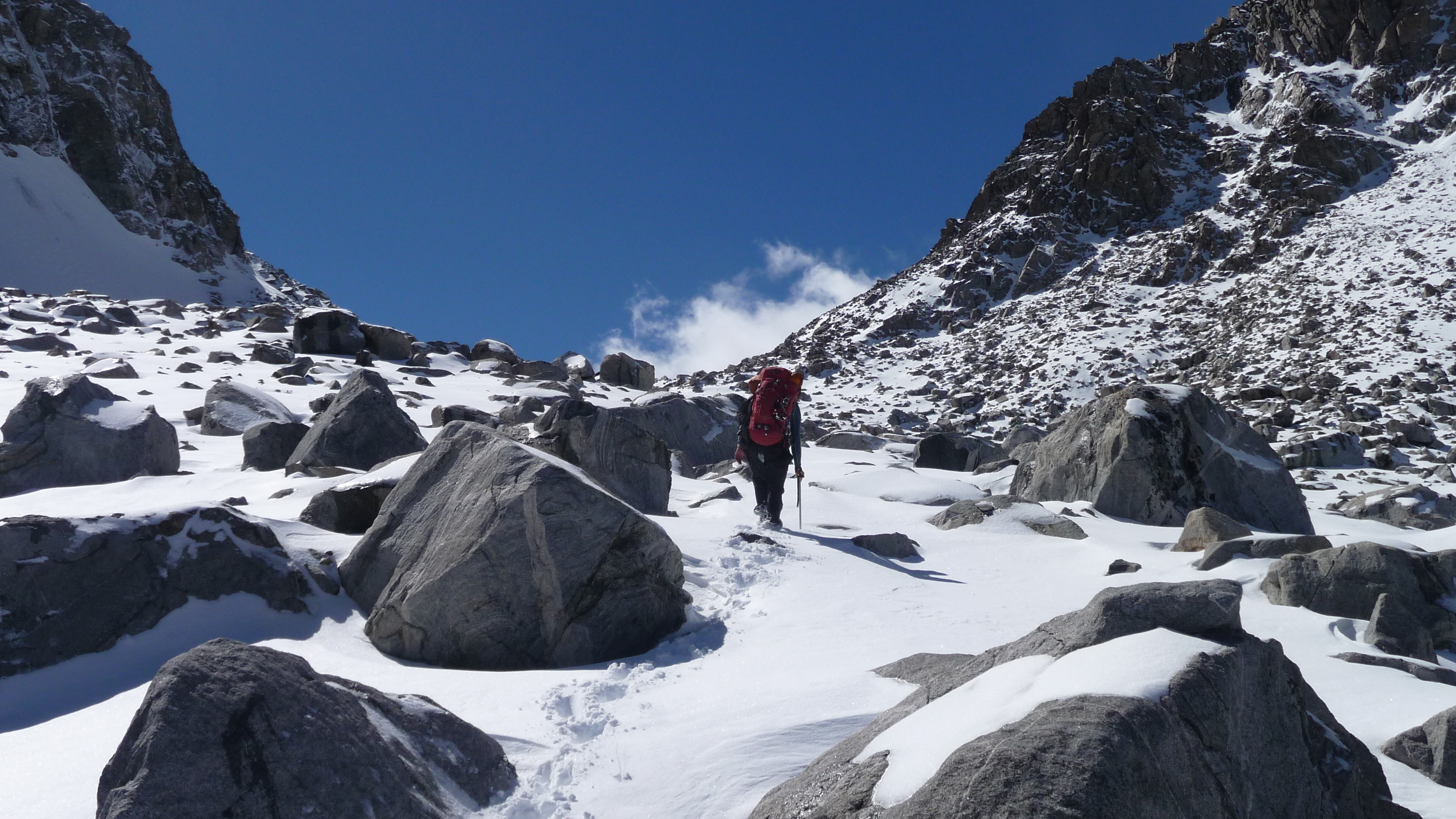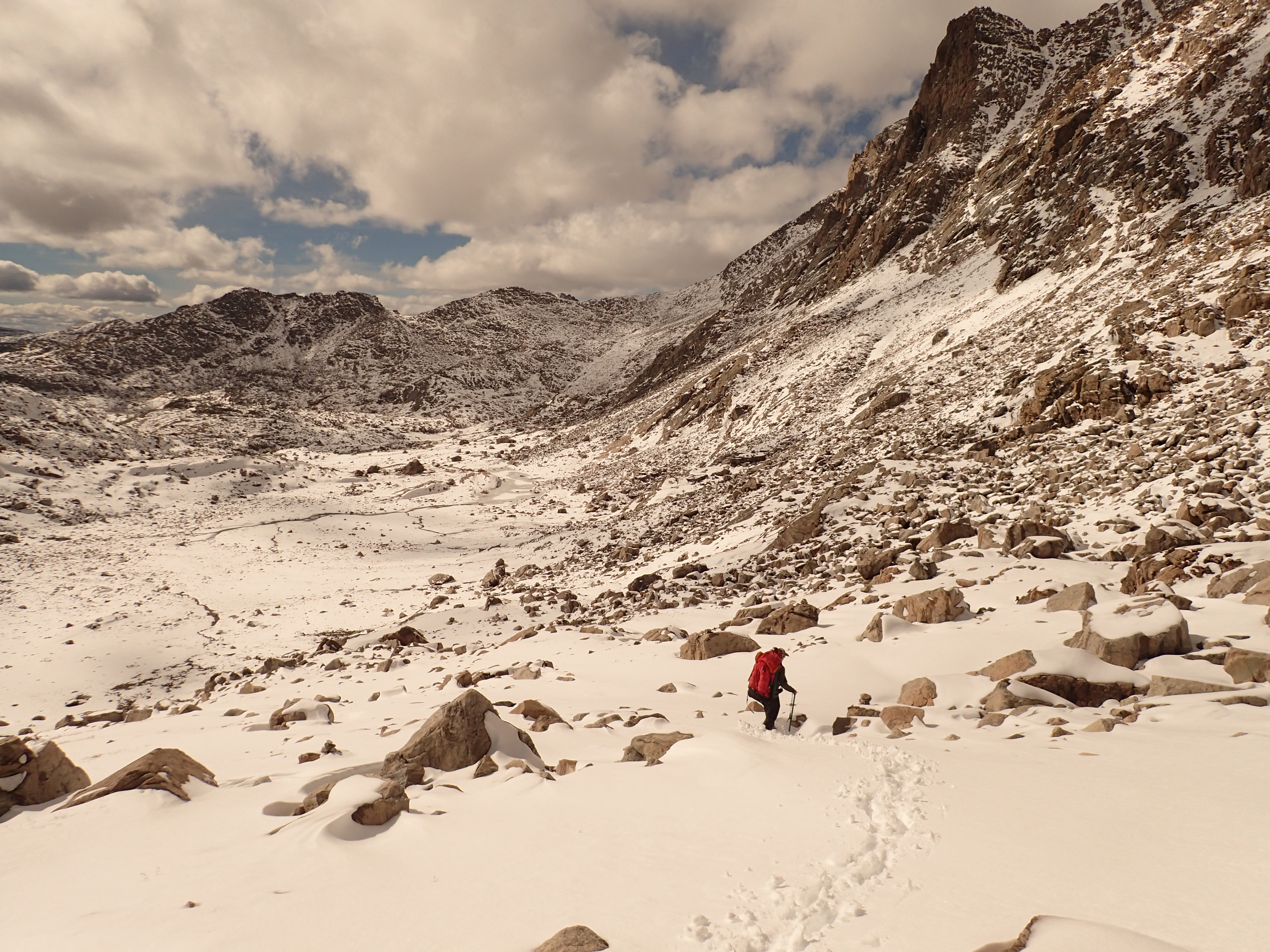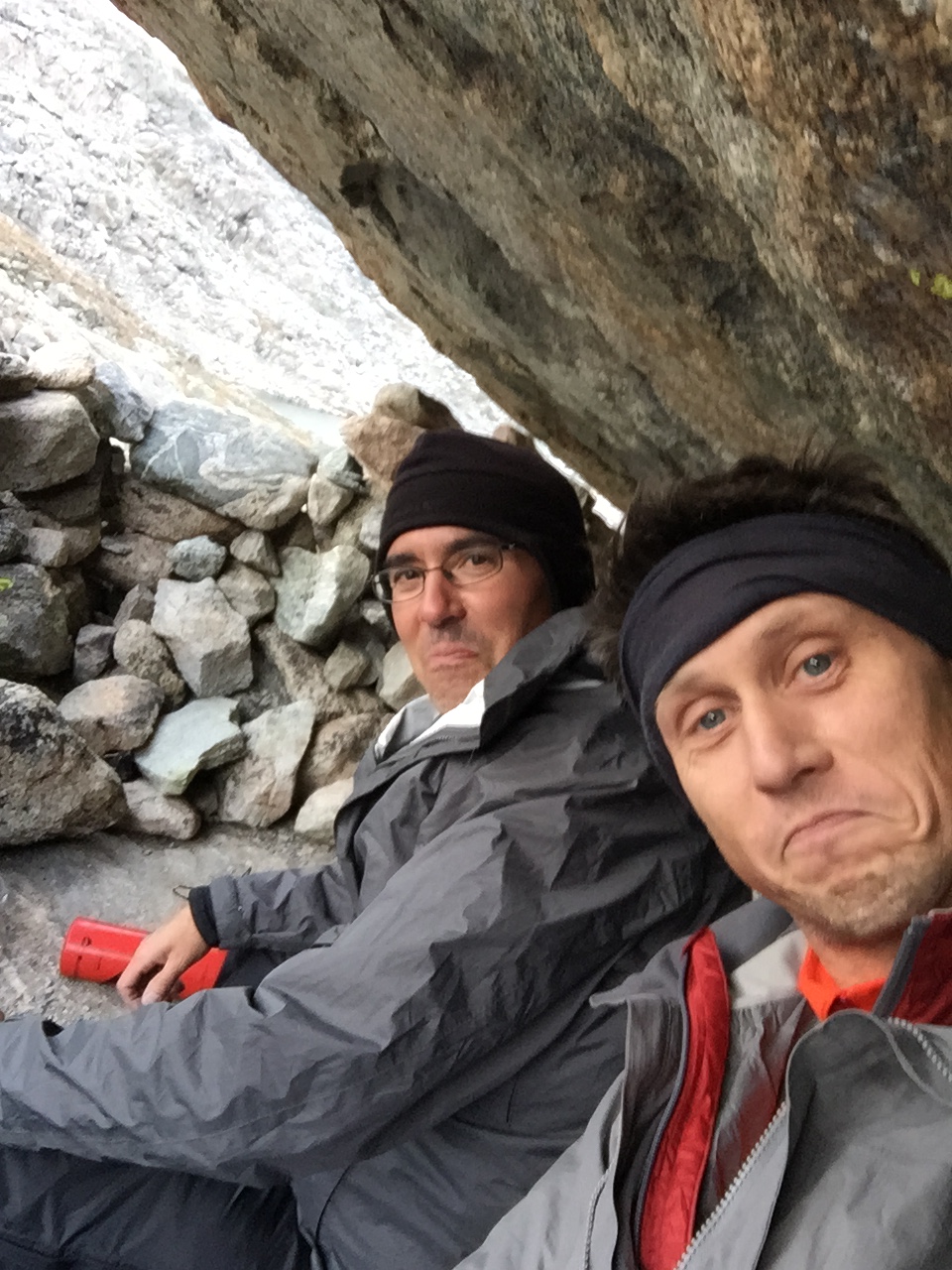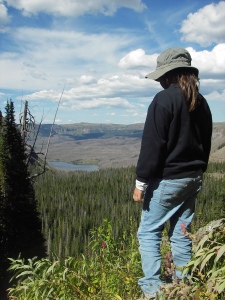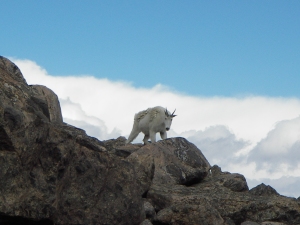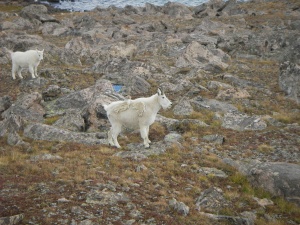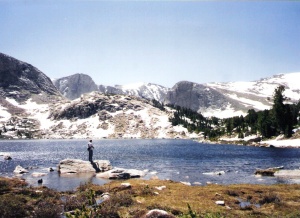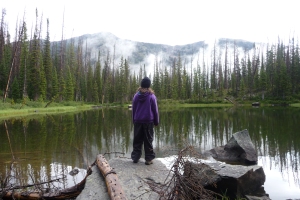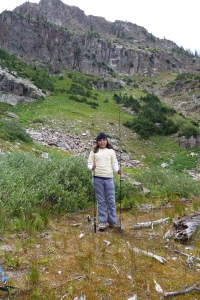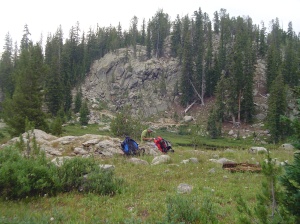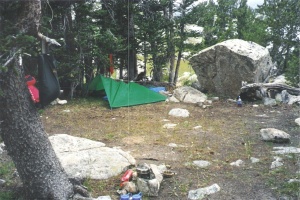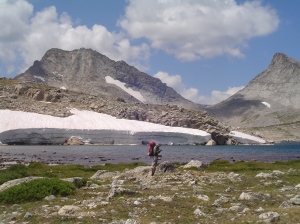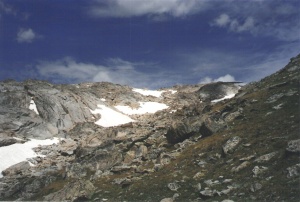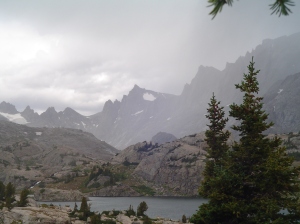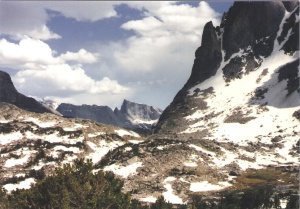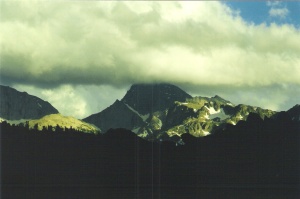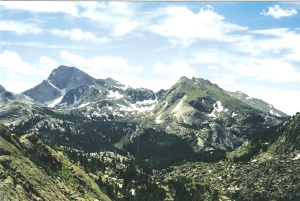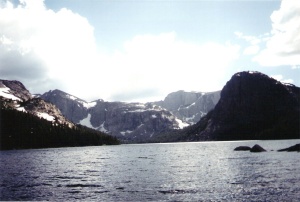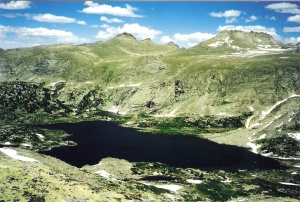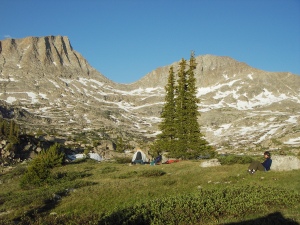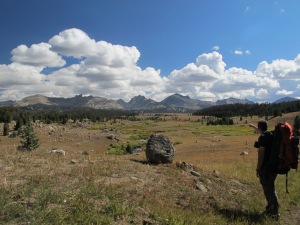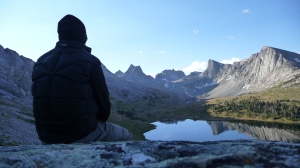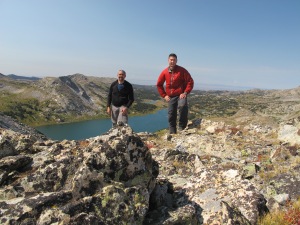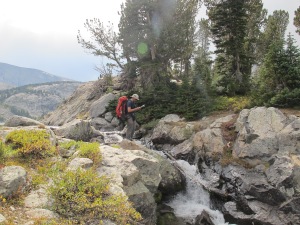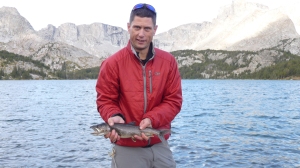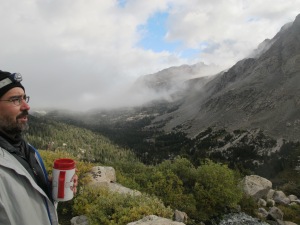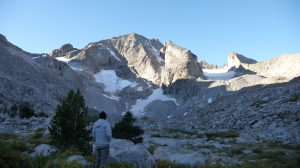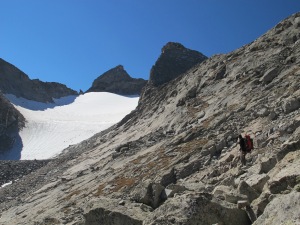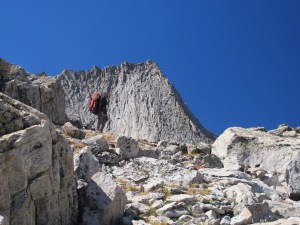Jason and I decided to hit the Winds again after our adventurous hike last year through the Thorofare. That hike and planning had solidified the concept of our lightweight hiking transformation. We finally let go of the “old ways” and embraced many of the new concepts of lightweight hiking. The old heavy leather boots were gone, replaced by trail runners or “hiking shoes”. Trekking poles were being utilized, and their potential were soon realized. Every part of our kit, especially the big three, were scrutinized to the very last half ounce. Items were replaced, some items were discarded, and ultimately, the transformation was complete.
We had aspirations of hiking the full length of the Winds, South Pass to Union Pass, staying as close to the divide as possible. This would be a trip that was to have many obstacles that we could not foresee many months prior and just days before our departure. We would formulate our own “high route” complete with a glacier traverse and as a last second thought, a possible second Gannett Peak attempt. We poured over the beta we had on our proposed route. We would carry all the necessary mountaineering equipment we though we might need to ascend and descend some of the passes we planned and ultimately Gannett Peak (assuming the snow bridge would be gone), if everything aligned. This was a tall task to get our weight to where we could travel the proposed 140 mile route, and safely accomplish it.
We all know what happened in March of 2020. The ‘Rona made its appearance and as of this writing, is in it’s third wave requiring a current lockdown of some services. We had our sights set on mid August, figuring the weather would be the best at this time for some continuous high country traveling. This year would also prove to be a very dry year, the driest I think I have seen the Winds. The snow patches in the high country were all but gone, the glaciers traversed were mainly solid ice and on the lower sections, braided rivulets were everywhere. Exactly one week prior to our start date, I was walking my dog, had her in a sit position on a leash as other dogs and bicycles passed. Well, the bicycle noise caused Nugget (my Boxer mix) to lunge and I heard a “pop” in my shoulder as the leash tightened. I was in denial as to what happened and assumed it would be better the next day. For three days I could not move my arm. I had about 4 days until we embarked at South Pass. Luckily, the last four days I made a miraculous recovery (at least I could use it and thought I could use trekking poles and some boulder scrambling would be ok) and felt much better about my ability to pull this off. Gannett was still a question mark at this time, as I was not sure I could self arrest with my shoulder the way it was. The day before we were to depart to Wyoming, we got information that we might have to cut our trip a day or two short. My uncle in Riverton had three lambs that needed butchering while we were up there. Seems that every butcher in that area was booked and unable to do it until fall. These were lambs that should have been processed this past spring and were large and unmanageable for my uncle. We agreed to cut it short. We scrambled (again, the day before!) looking at our days, mileage, and formulated a plan. We would have a couple really big days in there but thought we could still pull it off.
This trip started out with the usual pick up from DIA, drove to Riverton (with a quick dinner at Taco Johns in Laramie…..this is a ritual now) where we would stay the night and get our ride to South Pass in the morning. We had both purchased the InReach Mini this past year (this would have been a much better tool last year than our SPOT device on our Thorofare adventure) and really liked the functionality of two way texts in the backcountry. We drove to South Pass and headed up to Louis Lake Guard Station. We were using CalTopo and it showed the trailhead just behind the guard station. We drove around some and finally parked there, still not finding a trailhead. We decided we were close enough and would find the trail soon enough if we just hiked west. This is what we did, we said goodbye to my uncle (not sure, but seems he had that uncertainty about the whole thing like he did last year at the Ishawooa Creek Trailhead) and proceeded to hike up the slope into the trees and disappear. There was some downfall, steep sections, but in about 15 minutes we came to a trail that was going are way. We assumed this was the trail and officially started our journey to Christina Lake.
This hike was extremely pretty, lots of low mountain scenery with some really cool rock formations. It wasn’t long before we hit the 4-wd road that comes in from down below Lake Louise. We would follow this up to Christina Lake. We did not see or hear anybody on this road all the way to beautiful Christina Lake. This lake is a very large lake, that has an old dam with a headgate of some sort on it. The backdrop is spectacular with some high mountains at the west end of the lake. It looks to be heavily used by 4-wd vehicles, but we would only pass one campsite on the north side of the lake on our way shortly into the Popo-Agie Wilderness heading to Atlantic Creek.
This first day was to be the longest day we had, after drafting a new schedule a couple of days before. It was already designed to be a big day, we just made it epic. Jason and I were in very good shape (I would almost say exceptional shape for hiking, minus my bad arm). We had worked hard all summer getting into and maintaining decent shape. I was running 4 to 6 miles three to four times a week with weighted packs (16-20 pounds) with some core exercises thrown in, and Jason was going on crazy pre-dawn monster elevation gain hikes before work in the Seattle area (unfortunately not at higher altitudes though). We hiked north, entered the Popo-Agie Wilderness a short distance from Christina Lake and proceeded towards Atlantic Lake. It was not long before we were on the shores of Atlantic Lake, looking to the northwest at the ridge we were to climb. We were headed off-trail to 12,000 feet and eventually drop into Stough Creek Lake Basin.
I found a net at Atlantic Lake. It was a Brodin ghost net. After much thought, I decided to add this extra pound to my already too heavy pack weight (38-39 lbs at this point. My desired weight going in was 34 lbs. Some last minute mountaineering gear threw me over the top) and hike over 100 miles with it. From Atlantic Lake, we crossed the outlet, and proceeded northwest up a slope. The views up the Atlantic Lake drainage were some spectacular high Winds scenery. The ramps we found leading up were fine, and eventually made the summit ridge of the plain on top. We were now just under 12,000 feet and looking down into the Thumb Lake drainage. This was a very rugged drainage looking down onto Thumb Lake. We followed the ridge northwest up to 12,000 feet (the topo sure makes it look easier than it really is on the ground!). We were headed to the saddle that is used a bit from Leg Lake to the Stough Creek Lake Basin as the descent into the lake drainage was rimmed with cliffs where we were traversing. The altitude had taken it’s toll on us the first day. We had already made plans of stopping in Stough Creek Lakes area this first day as we our original plan was to go back up to Roaring Fork Mountain (west of the basin) and hit the Sweetwater Gap trail. This was not happening today. After cliffing out ounce just above the saddle between Leg Lake and Stough Creek Lakes, we finally made the saddle where we finally found our first water source since Atlantic Lake. We drank as much water as we dared (Jason did throw up his water here, think the altitude really knocked him down this first day) and made the fairly steep descent to one of the many Stough Creek Lakes.

We set up camp on one of the lakes in the basin and had to set up the tarp as an evening storm pushed through. We ate, drank, and ciphered. We were behind. We had been in this area before and new it fairly well. We finally opted for trail miles to try and get us back on track. We figured we could drop a little lower here, cruise on the trail system and make some time. We planned to go around the western Roaring Fork Mountain via trail and on up to Tayo Lake, Wind River Peak, and decide on our options from there. We slept, if you can call it that, my arm would ache this whole trip, and unfortunately, a little anxiety was setting in. We had to make Union Pass!
We awoke to a gorgeous morning (I would say any morning in the Winds is gorgeous though) and proceeded to pack up and hit the trail. We were setting our alarm at 5:15am every morning and getting out of camp about 6:45am. This would be our routine the entire trip. As we hiked by some of the many lakes in the basin, we started seeing our first hikers (people for that matter) this entire trip. We flew down the trail and eventually made the intersection with the Sweetwater Gap trail. Unfortunately we had lost a lot of elevation and now were looking to start back up. We met a couple hikers coming down from the Ice Lakes in Tayo Park and talked briefly. We then proceeded up to beautiful Tayo Lake at the base of Wind River Peak where we had lunch and took a quick siesta. It should be noted too, since we started this trip the day before, all the smoke from the California fires at the time was very prevalent and hindered our high mountain views greatly.
We ascended the slopes from Tayo Lake aiming for the saddle between Wind River Peak and Chimney Rock at around 12,600ft. This was a very pretty hike up, and the small drainage we ascended east of Tayo Lake was very lush and pretty, even in this very dry year. We made the saddle and could see three people making their way up to Wind River Peak. We assumed they were heading over the top into the gully that would take them down to the Black Joe Creek drainage (we assumed this was the Skurka route for the WRHR). We stopped with anticipation of dropping our packs and bagging Wind River Peak. It was already getting late, so we discussed and decided we needed to get off this mountain preferably before dark, so we chose to descend to Deep Creek Lakes for the night. Our original route in this area had two options. Basically we were to find a way from Wind River Peak or even Deep Creek Lakes, and take a bench over to the North Fork Trail and on up to the Cirque of the Towers. We did not have any first hand intel on this and not sure of how we would proceed once we got there. We would leave it up to our observations and map work.
We busted down the long but gentle ledge towards the Deep Creek Lakes. We would pass the Ice Lakes drainage, far below and encircled with cliffs, and eventually reach one of the upper Deep Creek Lakes mid evening. We had a pretty precipitous drop onto the shores of the lake but found a decent camp spot there to set up the tarp. We proceeded to have dinner and again, ciphered on our plan of action the next day as we got about a half a day behind today.
We awoke the next morning and proceeded to literally climb out of camp back up to the bench we had traversed the previous evening. We had decided that to make up time again, we would drop down to the trail that comes up from the North Fork Trail to the lower Deep Lakes and do some trail miles up to the Cirque. This unfortunately would require another significant loss in elevation and ultimately gain in elevation, but we felt it would be faster. We met a couple at the trail intersection just packing up their camp. Seems they had come in the Sweetwater Gap trail and were headed over Wind River Peak that day. They were doing the Skurka WRHR, which Jason and I knew a little of the logistics of that route, but not much. We eventually made our way to Lonesome lake and it was here that we met the most people on the entire trip. We had been to Lonesome lake many times before, coming in from Jackass Pass, Texas Pass, Sanford Park, you name it over the years. We had never witnessed it this crowded before, but we were not staying long. We took a break here, replenished our water supplies and again, decided to deviate from our original route. We decided to take the easy Texas Pass over the slightly less easy New York Pass. We still had the “original” Illinois pass to go over to get to Macon Lake that night. We easily cruised up to the top of Texas Pass (and still encountered a lot of people) and headed down to Texas Lake. We had been over and on the “new” Illinois Pass a couple of times before and opted for the unknown “original” pass that goes to the base of Washakie Peak. The south side of the pass was very straightforward and the view on top was amazing, looking back towards the back side of the Cirque and towards Mount Washakie. It was getting to be early evening on top and we knew we had the worst to come. The description is of loose boulders on an old terminal moraine all the way to Washakie Creek at Pass Lake. It did not disappoint. In the slowly fading light, we made our way down this very loose pile of rubble. The remnants of the Washakie Glacier were visible all the way down. Cliffing out a couple of times just coming off the top of the pass made for some mid hike re-routing. It took us a while to navigate and skirting the east side of Pass Lake, we finally made Washakie Creek and it was up now to Macon Lake. We bushwhacked through the dense willows and foliage and the odd boulder field up the relatively steep slope to Macon Lake, our destination for the night. We popped out on the bench and found the Washakie pass trail and followed it east for a while until we were at the midway point of Macon Lake. It was getting dark by now and we found a place to camp. Jason went to get water, I set up the stove for cooking. We would cowboy camp this night. We had visitors come in and set up their campsite about 30 yards away. We were annoyed they set up so close, but at least they were polite and asked if it was ok ( I guess we were too polite to tell them to get out of here, there are tons of camp spots to choose from on this bench). We probably annoyed them the next morning when we awoke at 5am though, so we got a little revenge.

After a nice sleep out under the stars we were up at 5:15am and out at just before 7am like clockwork. We where headed up a little off-trail pass over to Grave Lake today, then up to Baptiste Lake and then our biggest unknown of the whole trip, could we get over Mount Lander to Moraine Lake? We knew the Moraine Lake side was doable, as we have seen that side on previous pack trips on the reservation. This little pass area was very pretty and dropping into Grave Lake drainage, there were some nice big evergreen trees and some relatively easy hiking. Towards the bottom it did become quit steep and more difficult in sections. We soon found the trail from Hailey Pass to Grave Lake and followed it up to the Baptiste Lake trail.
Baptiste Lake is set in a wide open basin with Mt. Lander at the head of it. To our surprise, there were quit a few people fishing when we got up there (Baptiste has always had a good reputation for some nice cutts). We had both complained we were in some sort of funk. It was actually good to hear that Jason was feeling like me. We were drained this day. We stared at the daunting task and unknown of getting over Mt Lander and it did look daunting to say the least. We again discussed our forward progress, and feeling the way we did ( was actually good we were both in a funk this day, makes the decision much easier for the both of us) we decided to go back over Hailey Pass and then up to Pyramid Lake area for the night. This decision was a little disappointing but, Pyramid Lake area is one corner of the Winds neither of us had been. This made our bailout decision a little easier. I also got about an hour of fishing time at Baptiste while we relaxed.
We cruised back down the trail and headed up over Hailey Pass. Going up and over was straight forward (we had been over this pass a few years prior) and before long we were down at Mays Lake. Coming down we saw a group of three or four people with climbing gear and carrying 5 gallon home depot buckets filled with gear. The lead was carrying his in both hands while shouldering what looked like a way too heavy of a pack. None of them looked happy. A short time after this, we hit Mays Lake and cruised on up to Pyramid Lake where we decided we would stay the night as we were still both in that funk. We set up the tarp again as we encountered some evening rain and wind. Tomorrow we had decided that we needed to be at the base of Europe Pass on the reservation. This would involve the short rise into the beautiful East Fork Lakes drainage, then over a pass dropping into the lower Bonneville Lakes Basin, only to ascend once again to another pass above the upper Bonneville Lakes then down to Middle Fork Lake, then again to climb the steep slope up to Bewmark Lake and follow the drainage up to Photo Pass only to descend into the South Fork Bull Lake Creek drainage and eventually pull up to the west under Europe Pass.
We awoke the next morning feeling much better and got our usual early start. The little notch from Pyramid Lake to the East Fork Lakes proved to be very easy, and although technically trailess, a very well beaten path did exist before fading in and out in the upper valley of the East Fork Lakes valley. The sun was just hitting the peaks to the west (Raid Peak, Mt Bonneville, Mt Geike) and made for some great scenery. This valley is exceptionally beautiful and is a great representation of most of the high country in the Winds. From Pyramid Lake to the Bonneville Lakes was the only country that Jason and I had not traveled, minus Christina Lake to Stough Creek Lakes Basin down south.
We made quick time up this valley and to the little pass to the west (some light boulder hopping, but very straightforward) overlooking the South Fork Boulder Creek drainage. We decided to head down west and then skirt the cliff bands to the north to hit the lower Baptiste Lake. We rested briefly, and headed up the drainage towards the upper Baptiste Lake and Sheila Lake. The upper Baptiste Lake and Sheila Lake are in a very pretty cirque. We encountered a couple camping at the outlet of Baptiste Lake and soon busted up to the Pass, looking down into the Middle Fork drainage. We were stoked upon this site. We knew this country well. We felt we could stay on track and make up some time now. We could see clear across to Photo Pass at this point and past there, hopefully part way up to Europe Pass, we would camp this evening.
With our upbeat mood, we pushed on and soon hit the massive Middle Fork Lake and started cruising towards Bewmark Lake. We had done a loop a few years earlier from Bewmark Lake, over to Lake Heebeecheeche, then back south over to Moraine Lake, up and over St. Michel Col passing Noel Lake and eventually out via Scab Creek. We followed Middle Fork Lakes east shore until we got to the outlet stream from Bewmark Lake and headed up. It’s a short but steep hike form here but before long we hit the top and pulled out onto the bench at the same overhanging boulder we had camped at a few years prior. We startled a solo hiker from New York here just setting up his camp. We chatted a bit (mainly Jason and him as they discussed camera gear) and moved on to our next destination, Photo Pass. The hiking was easy and the pass was made in short order. The north side of the pass was very well constructed and easy to follow. It was getting a little later in the evening, we had been hiking for a long time with some significant elevation gain and loss, we were getting a little tired. We decided to hit the trees, hike a bit where we would need to head west towards Europe Pass and call it a day. We found a great campsite in the trees, filtered some water, set up the tarp, cooked dinner and called it a night.

The morning started out bright and beautiful. We had more ambitious plans today to keep us on track and hopefully make up some time. We had been out of this drainage up to Europe Pass a few years ago and was pretty straight forward. We had come in from Deadman Lake to the south that time. Well, coming from the north proved a little bit more interesting in the route finding. We stayed a little too far north, and skirted lake 10,563 thinking it was the lake we had stayed at few years ago. Something did not add up and we soon ciphered we where on the wrong side of the ridge. We found a nice notch from this drainage up and over to our lake at around 11,200ft and realized what we had done. From here it was an easy hike up to the Europe Pass plain proper. We hit the plain on top and both of us anticipated a nice ascent ramp up to the even higher plain that we would take down into the Golden Lakes drainage. Again, something did not add up in our minds. We sat staring at a mountain in our way. Did we have to go over this? As with a lot of our passes we had taken already, it looked impassable. What little we knew of the so called “Skurka Route”, we knew that you had to go up Europe Peak. So, we decided to head up and see what we could do (here is one instance where the topo map makes this look a little easier than it is on the ground). As we approached, the intimidation factor abated a bit as we saw the knife ridge, basically the Continental Divide, that looked like the only pleasant way to tackle this block of grass and rubble. Once we hit this ridge, it was straightforward and smooth sailing to the upper plain at over 12,000ft. The last 50 yards or so had some very easy class 4 scrambling and a section of about 20 yards of exposure on each side, but then you were on an immense plain with the norther Winds in full view.
Climbing up the ridge was actually pretty straightforward once we started up. We used a bit more energy already (going into the wrong drainage towards Europe Pass, and now basically climbing Europe Peak) than we had planned, but we were feeling very good and still on track. We started hiking north. The hiking was very easy at this time as we headed towards the distant Golden Lakes drainage. We would stop on top and take a quick snack break and nap before moving on.

It was not long before we hit the main trail on the lower Golden Lake and headed north. It was not long before we started seeing people. Our previous hikes in this drainage , we had seen a total of 0 (zero) people over the years. It seems this area is getting a lot more use these days, and the few we actually talked to, are doing either the Skurka high route or the Adventure Alan high route. This used to be a fairly remote spot in the Winds that Jason and I have visited several times over the years. I was disappointed to see so much traffic back this way, but it was not crowded by any means. As we busted north, we were running out of energy and time and good weather to make a pass over into the Alpine Lakes drainage, so we decided to stop at a lake at the top of the pass to Camp Lake.
We set up camp on a beautiful outcropping that jutted into the lake. Water was a steep affair to get from the lake, but Jason hoofed it down to the rocky shore as I set up the tarp and kitchen. By this time, the weather had turned windy and cloudy and we could hear the distant rumbling of thunder. We were not in the best spot for inclement weather, especially to deal with potential lightning, but we would have to manage and hope for the best at this time. There were not many better options except back down in the Golden Lakes drainage or push on down to Camp Lake. Jason returned with the water, I had the tarp set up with the west wall set as close to the ground as possible to block the wind and soon to come rain. We found some shelter in the boulders to get out of the wind to boil our water and make our dinner. Just as we finished with our kitchen chores, the rain came in. We hoofed it to the tarp and ate dinner there as the torrential rain and scary lightning came down in a fury. The storm lasted an hour or two before abating. We heard a significant rock slide just after dark on the other side of the lake.
We awoke to a beautiful morning. We had decided to take the trail to Camp Lake and head up the Alpine Lakes drainage instead of “Douglas Pass” to what we thought would make up some time. We did forget about the significant elevation loss down to Camp Lake, but reached it in no time and started the long haul out of there to the Alpine Lakes. A couple steep slopes and some route finding and we were on the bench that held the lower Alpine Lake. We had met a hiker doing the high route at Camp Lake and he told us about some scrambling if you went the north route around this lake. He described it as pretty intense. We fueled up here and rested for a quick 15 before heading to the north route above this lake. You did have to skirt a cliff, but then there is a break in it, where there are ledges to descend down to the lake shore. I guess it could be listed as easy class 4 scrambling in places (I did have to take my pack off and lower it down, this more had to do with my bum shoulder) , but overall was easy and not anything as what was described to us.
We continued up the Alpine Lakes drainage under clear skies and just a beautiful day. We did not have much intel on this drainage, but knew that is was some rough country and we were both aware of the Mike Turner story. We managed up the drainage fairly easily at first and found this remote lake basin absolutely gorgeous. We now had a decision to make after getting to one of the middle lakes. Do we follow the outlet to the upper lake or go around and high as one “published” account states. We decided to go with the known “published” route and got into some most treacherous terminal moraine conditions we have ever encountered. Scrambling through huge bus sized rocks held loosely by sandy soil and in places ice, it was a slog and mentality draining. we scrambled out of there and the “published” route still indicated the path was to go higher. We finally saw a way down to the top lake and at the very bottom of the pass. We would lose a ton of elevation, but would be out of that mess and just grunt it up the pass. Already spent from the high route, we made the pass fairly quickly as weather seemed to be approaching. The view from the top was superb. The disappearing Knife point glacier was before us and our next objective for the day, Indian Pass. We were in familiar territory now, and could see todays destination in site.

We decided to try and stay high to get on Knife Point Glacier, and might have been much easier 20+ years ago when the glacial ice came up higher towards Alpine Lakes Pass, but now was a jumble of loose terminal moraine. This moraine field was much easier, although steeper, than the one encountered in the Alpine Lakes drainage. There were a few decision making items to discuss here and as we were both getting a little exhausted, tempers flared a bit (mainly mine once we got onto Knife Point Glacier) as we finally crossed Knife Point Glacier. We dodged a few small crevasses as we were able to stay high and finally got onto the rocks just under Indian Pass. we busted out the pass in fairly short order as we watched a small herd of deer go over the pass in front of us. It was getting fairly late as we made the pass and we finally had trail to bust out to one of the many tarns to camp. This was a “bailout” route, as we had anticipated doing the glacier traverse on the east side of the divide, traversing Elsie Col to the Dinwoody drainage. As with most of this trip, we were winging it day by day, as we had to be out to butcher some sheep.
We made a tarn and camped in the exact spot we had camped on a previous trip many years prior. It was basically dark and we decided to cowboy camp again as the night looked cloudless and peaceful. We filtered some water, ate and settled in for the night. We decided on our last 2 days and figured they would be easier days, so we decided to sleep in, we would wake up an hour later, 6:30 AM.
Something woke me up. I look up at the sky and do not see any stars. It’s all black. It is 4 in the morning. I feel moisture hit my face. I hear Jason rustling in his bag to my right. We converse and mention we both felt a few drops of rain and could hear wind coming. We decide we need to act. Just as we get out of our sleeping bags, a huge gust of Wyoming wind and moisture begin. The wind is intense and I see my groundsheet (silnylon sheet) fly what looks to me away in the dark out of sight of my headlamp. I wad up my quilt, sleeping pad, and my groundsheet (it was wrapped around my leg) and go stuff them between a couple rocks. The gust almost blows my sleep system away until I can throw a few rocks on it to keep it in place. I quickly grab the tarp (which flapped uncontrollably in the intense wind) and staked down 4 corners as Jason took charge in securing everything blowing around. I set up the two trekking poles and we had some resemblance of a shelter now. We loaded all our bedding inside and finally went outside to fully secure from the wind. We got things situated inside, and after the adrenaline rush, listened to the rain and wind for maybe twenty minutes before the storm left as fast as it came.
We woke up to a beautiful clear morning with a beautiful sunrise. We decided we were going over Dinwoody Pass, across Dinwoody Glacier and down the Glacier Trail as far as we could today, for an easy exit tomorrow. We packed up and headed out. We started seeing a few people about halfway out of Indian Basin (you used to rarely see many people in the basin, times have changed) and made our way down towards Island Lake. We hit the trail into Titcomb Basin and proceeded to ascend towards Dinwoody Pass. This was Jason’s first time in Titcomb Basin and my second. I had done a solo hike from Dubois to Pinedale some 20 years prior using this route. It is spectacular and we surprisingly only saw one other hiker walking through (no other camps either). The hiking was very easy through here and we made it to the base of Dinwoody Pass fairly quickly. This was a warm summer and the high country snow was some of the sparsest I have seen it. My crossing of Dinwoody Pass some years ago revealed snow almost to the pass on the north side and all snow on the south side. This year, it was all rock.

We busted up the high use Dinwoody Pass and enjoyed some fantastic views of Gannett Peak and back into Titcomb Basin from the top. I still would rate this view as my favorite in the Winds. There were no climbing camps in Titcomb Basin (the snow bridge had melted out by now) but we would see a few at the base of Gooseneck Glacier. We traveled the slope down to Dinwoody Glacier, put the crampons on once we hit the ice and skirted away from the easily seen crevasses. We finally hit the dreaded boulder field (we had gone through this at 4am in the morning under headlamps on our Gannett Peak climb a few years earlier) and worked our way towards the ending of the Glacier Trail. We finally hit the trail and were able to bust out some miles. We would see a few people on trail but most of the activity seemed to have died down, assuming this was due to a much harder climb of Gannett due to the snow bridge being melted out. We made Floyd Wilson Meadows and cowboy camped for the night.


We woke up the next morning with a heavy dew on everything and proceeded to pack away our wet gear. We had an estimated 16 miles to get out today and wanted out by 3PM at the latest. We proceeded to meet Jason’s dad at the trailhead at exactly 3PM and head down the highway towards Midvale/Riverton area for our next adventure of our trip. Lamb Kabobs and Lamb Tacos.





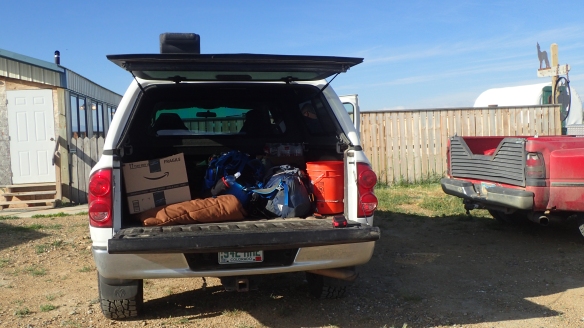
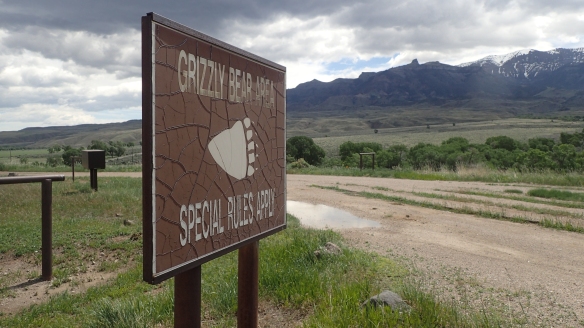





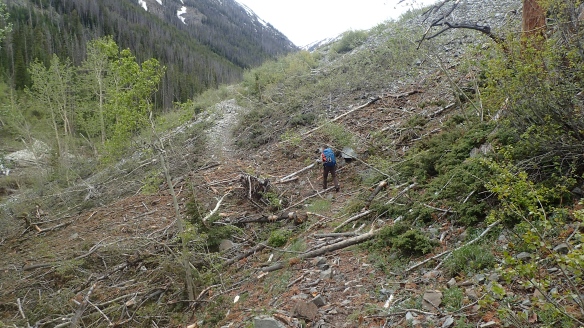


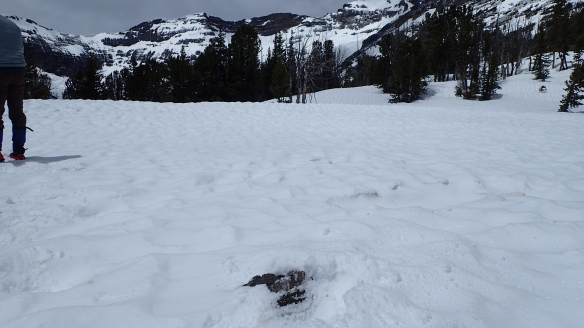



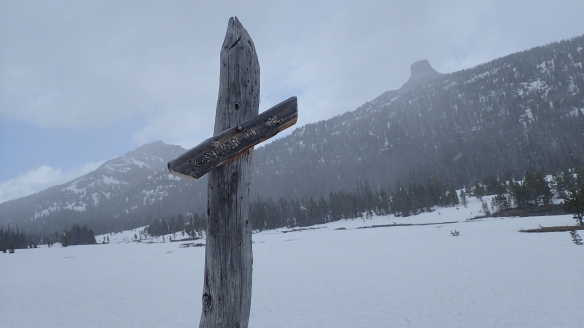








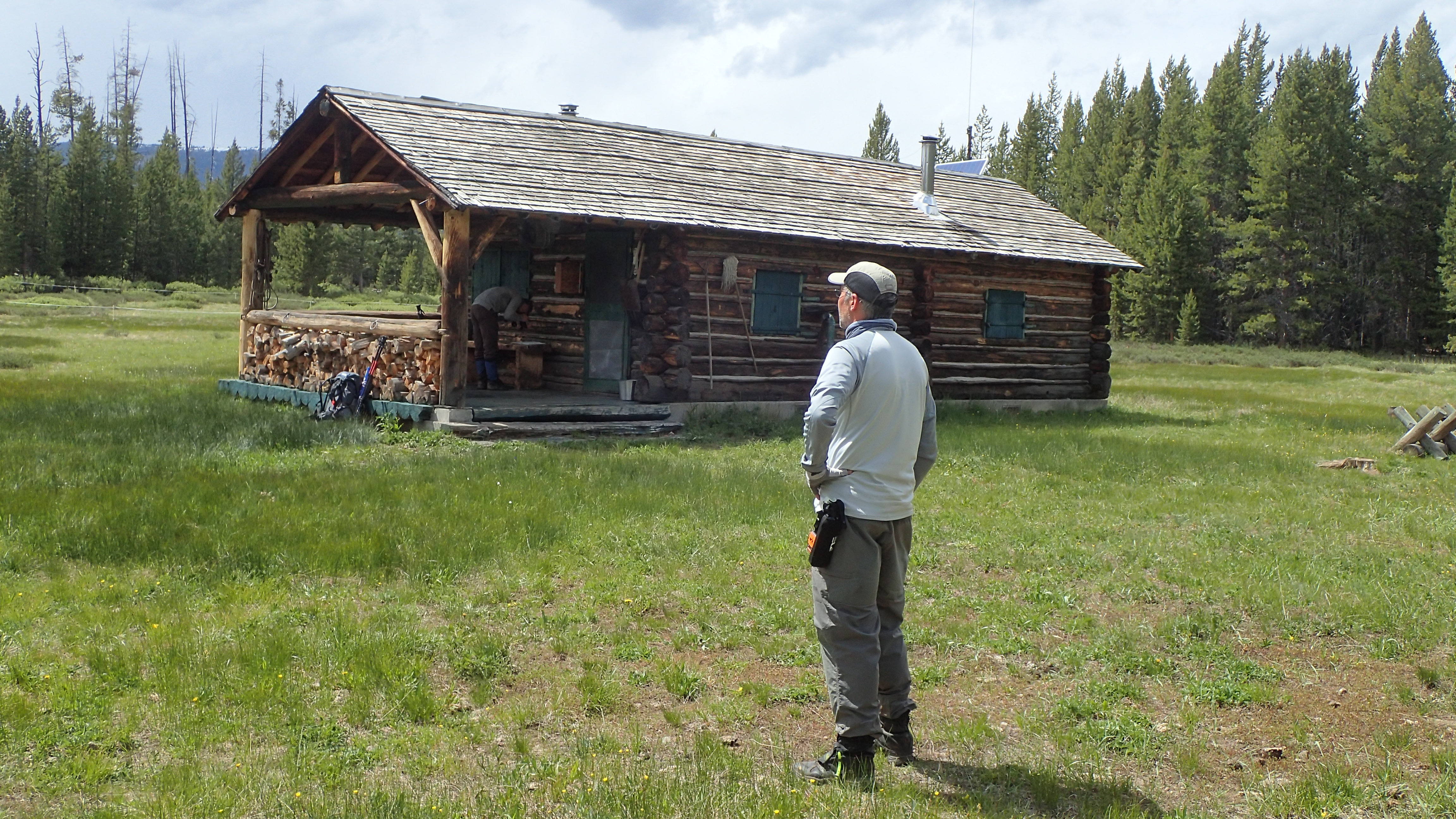

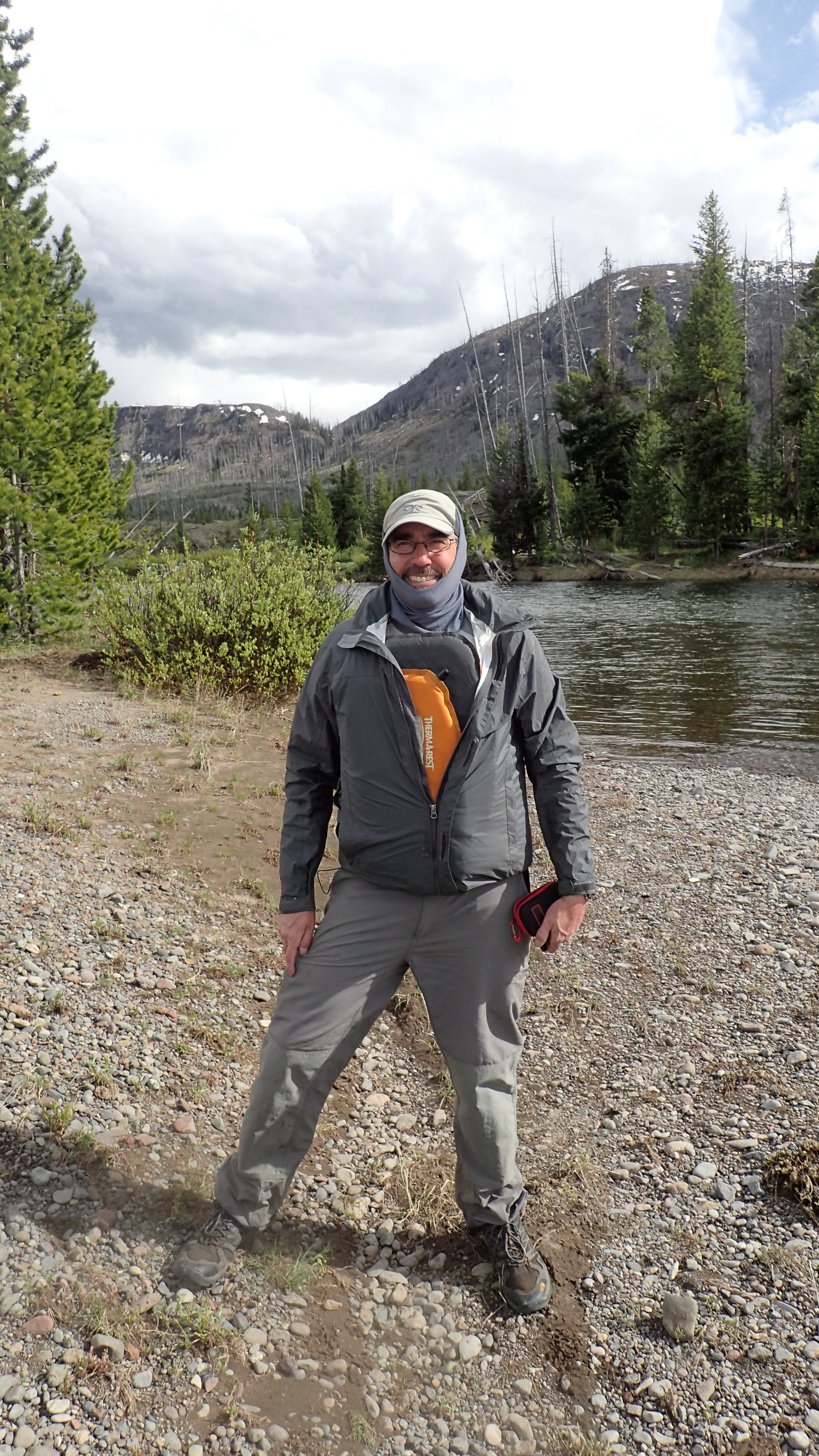


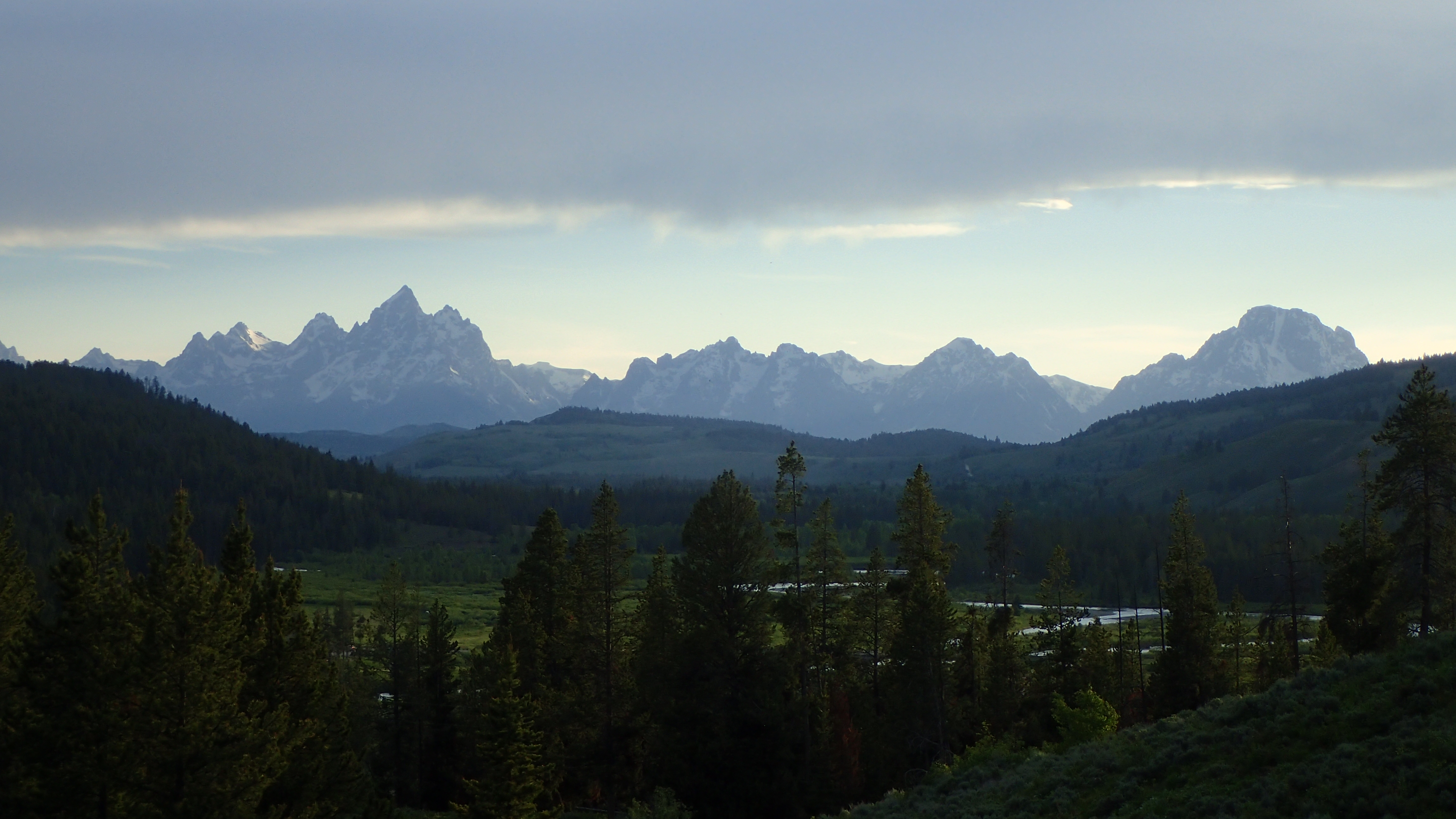
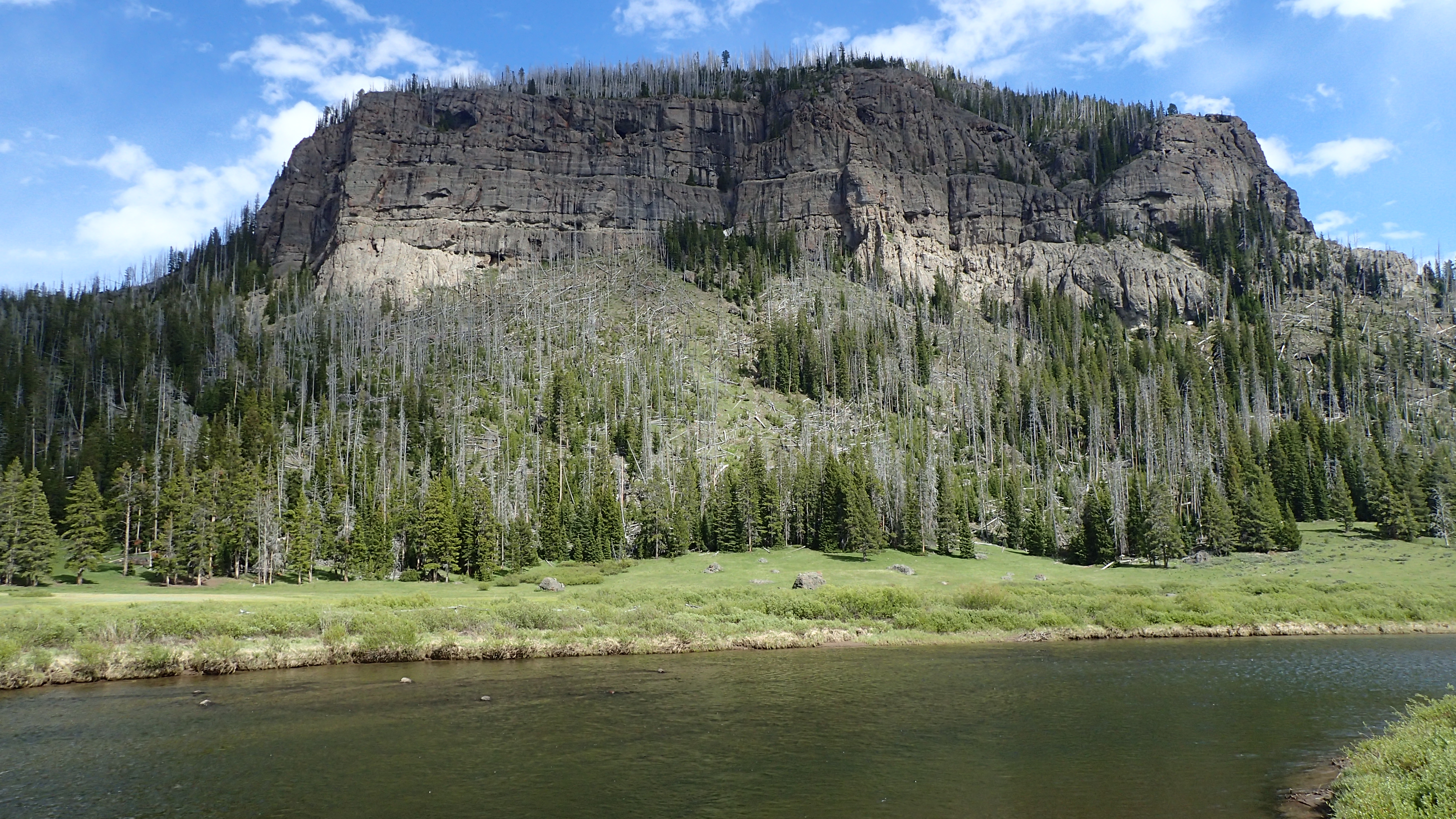
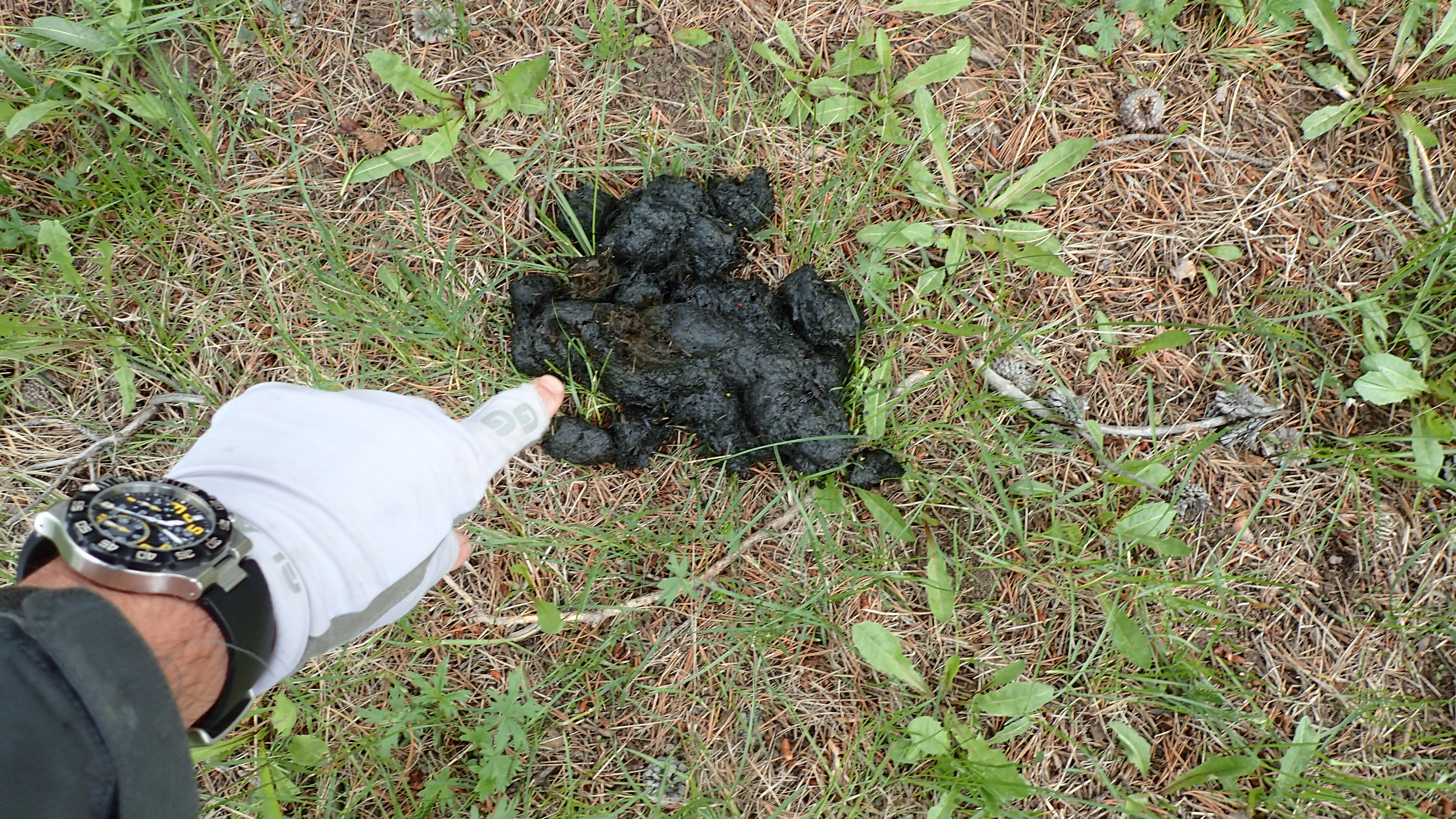
 This trip was originally going to be 7 passes in 8 or 9 days. We had received word on our second to last day in, that there was a storm filtering into the area that was to drop snow in the higher elevations (where we were) measured in feet, not inches. We have done plenty of trips in heavy rain and snow over the years in all parts of the Winds and this was not a major cause for concern, we just didn’t know if we wanted to deal with it since we were towards the end of our trip. We had only one more pass to cross (easy trail pass) over the divide, then it would be smooth sailing to the trailhead. We would wait until the morning to make the call.
This trip was originally going to be 7 passes in 8 or 9 days. We had received word on our second to last day in, that there was a storm filtering into the area that was to drop snow in the higher elevations (where we were) measured in feet, not inches. We have done plenty of trips in heavy rain and snow over the years in all parts of the Winds and this was not a major cause for concern, we just didn’t know if we wanted to deal with it since we were towards the end of our trip. We had only one more pass to cross (easy trail pass) over the divide, then it would be smooth sailing to the trailhead. We would wait until the morning to make the call.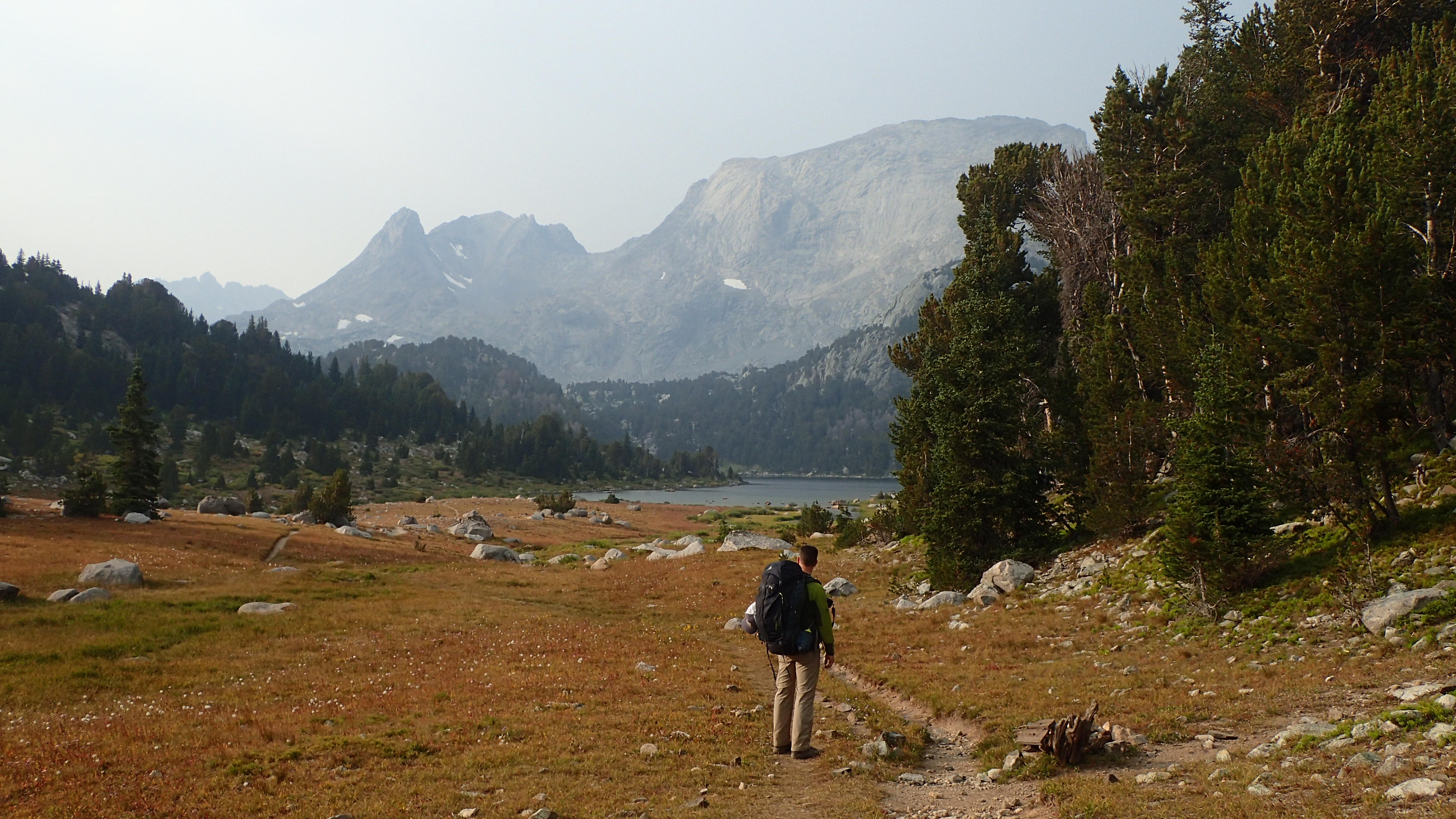 We had seen a fair amount of people along the trail to Mae’s Lake (an older group camping at Mae’s Lake were headed up to Pyramid Lake to get into some Goldens for the first time.) but overall, most of the traffic must have been over Jackass Pass into the Cirque.
We had seen a fair amount of people along the trail to Mae’s Lake (an older group camping at Mae’s Lake were headed up to Pyramid Lake to get into some Goldens for the first time.) but overall, most of the traffic must have been over Jackass Pass into the Cirque.
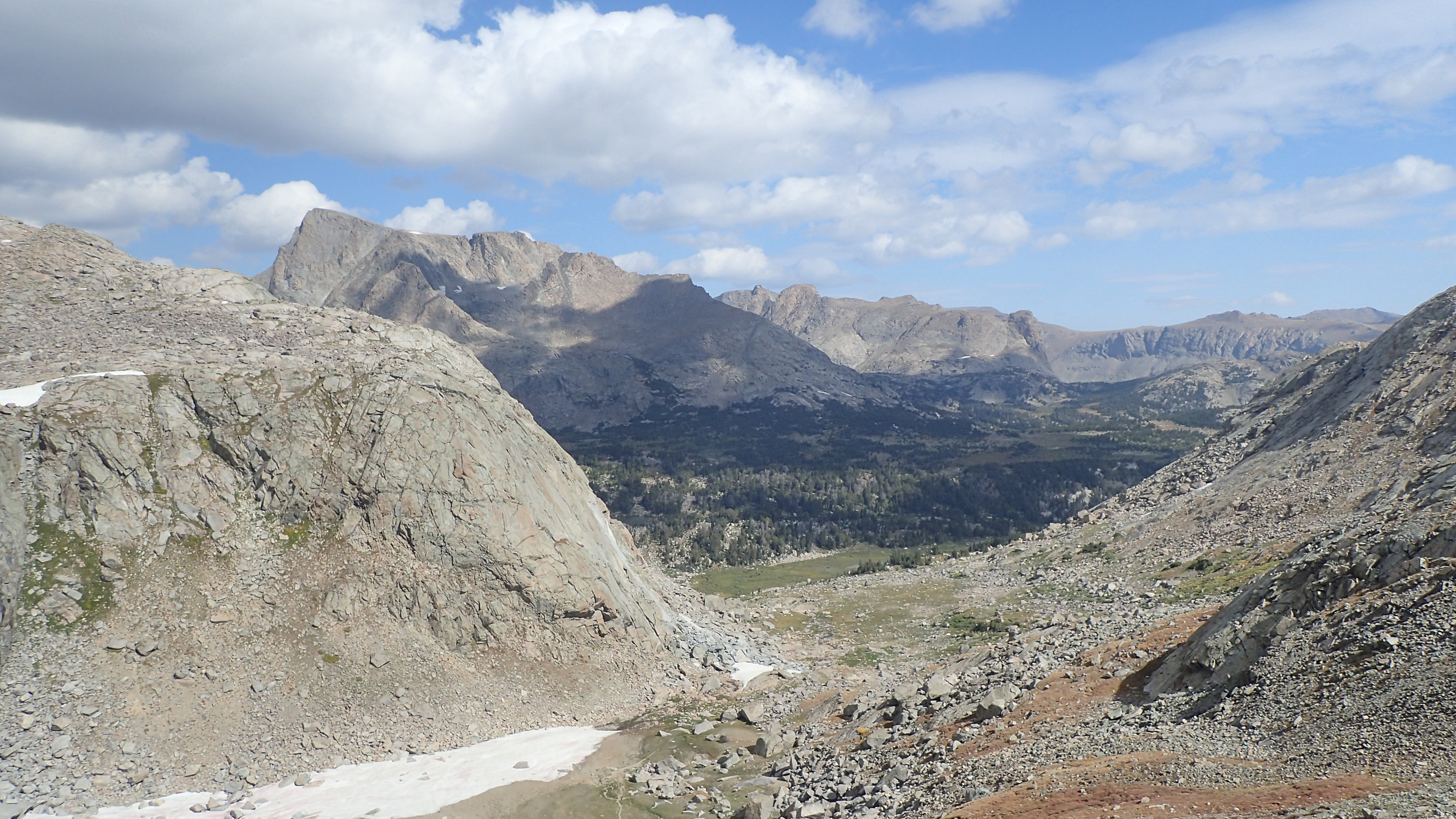


 We awoke sometime in the late night to heavy rainfall. I normally do not carry a pack cover, as I usually spray my pack with a waterproofing agent each year and carry a garbage bag for intense rain in camp. I have only had the contents of my pack get wet once in all my years of backpacking and that was due to some intense rain and snow encountered while hiking (that being said, I always keep my sleeping bag and clothes in a small garbage bag). I did not do either this year. We both woke up and raced to bring our packs under our vestibules.
We awoke sometime in the late night to heavy rainfall. I normally do not carry a pack cover, as I usually spray my pack with a waterproofing agent each year and carry a garbage bag for intense rain in camp. I have only had the contents of my pack get wet once in all my years of backpacking and that was due to some intense rain and snow encountered while hiking (that being said, I always keep my sleeping bag and clothes in a small garbage bag). I did not do either this year. We both woke up and raced to bring our packs under our vestibules.
